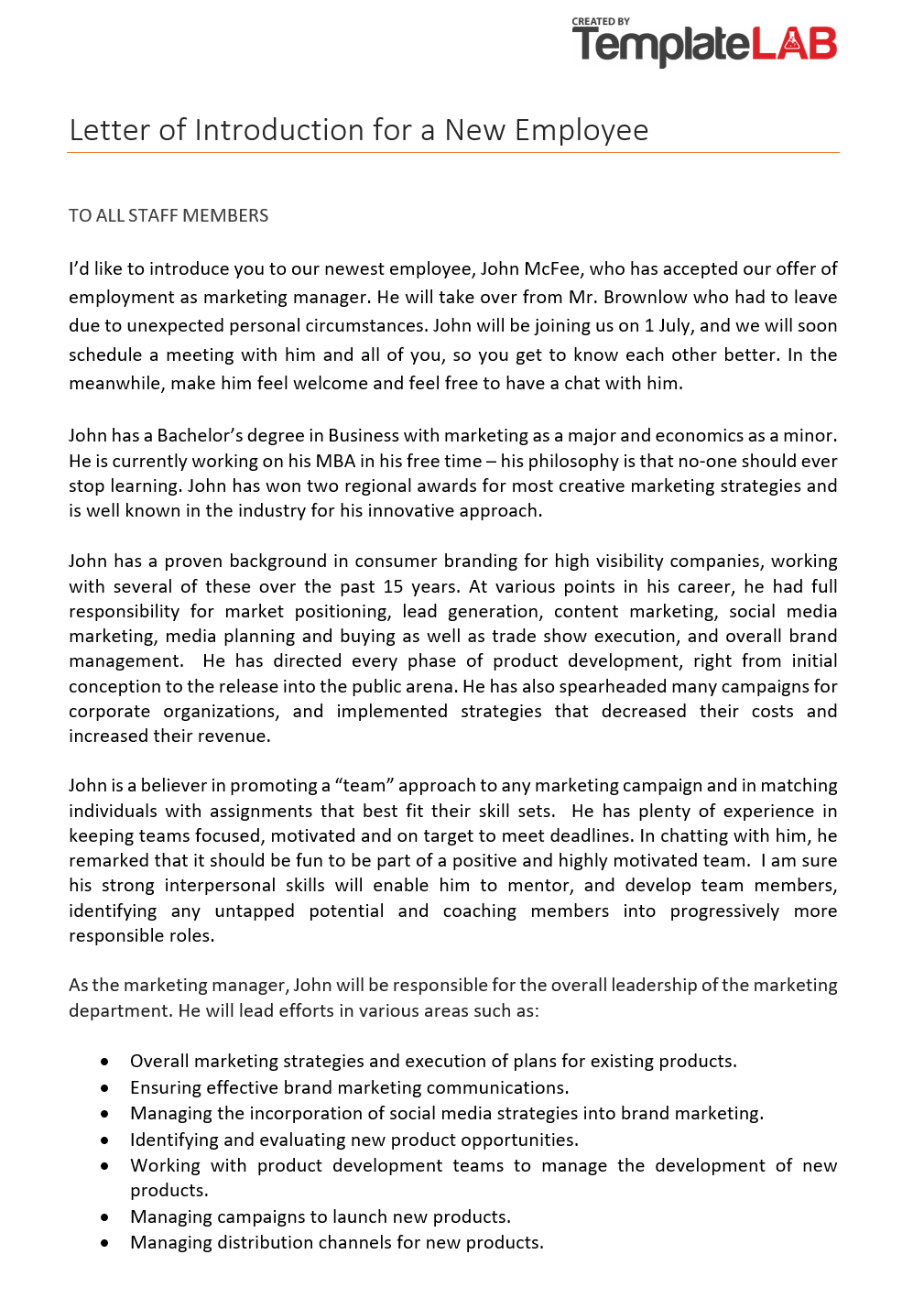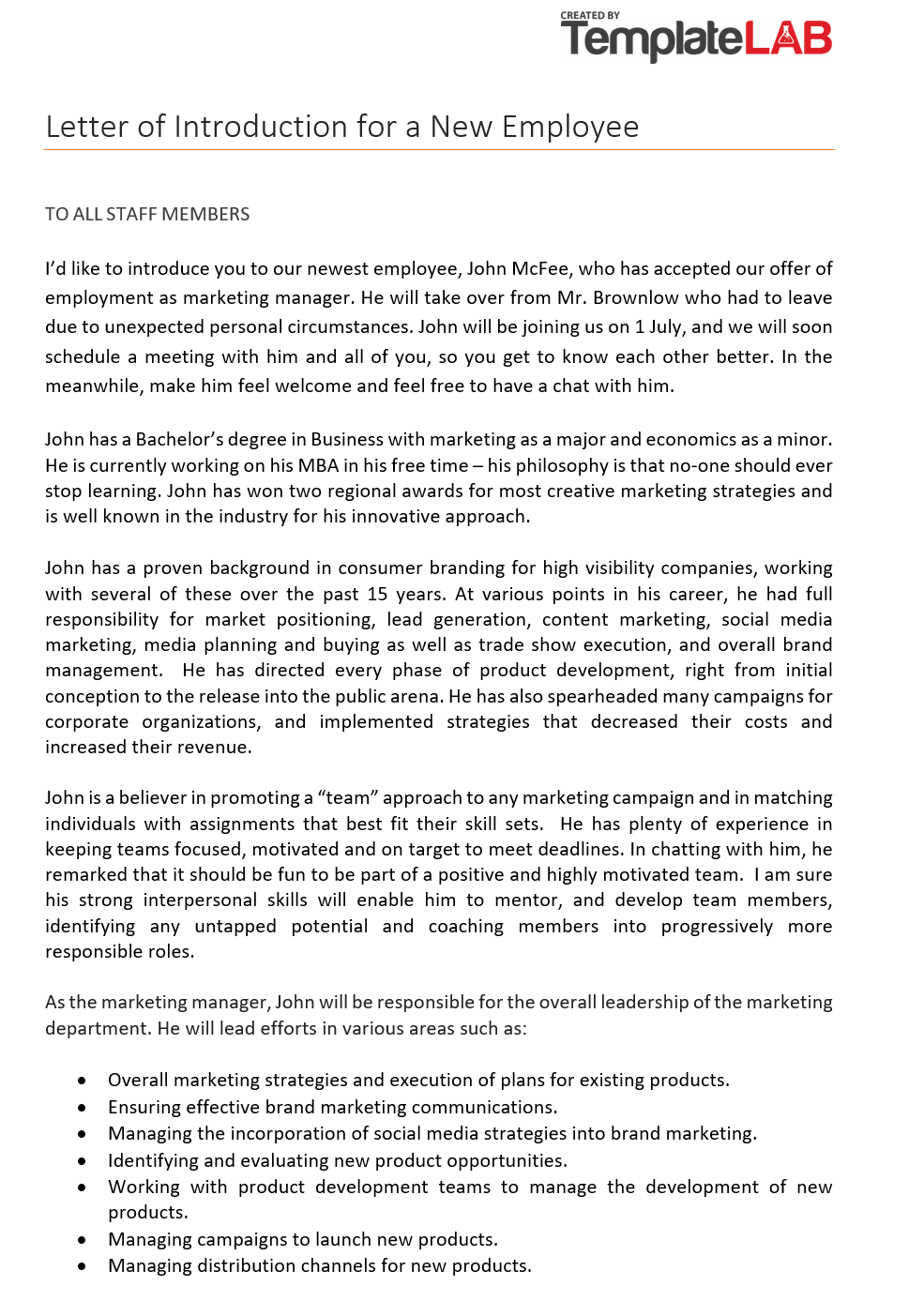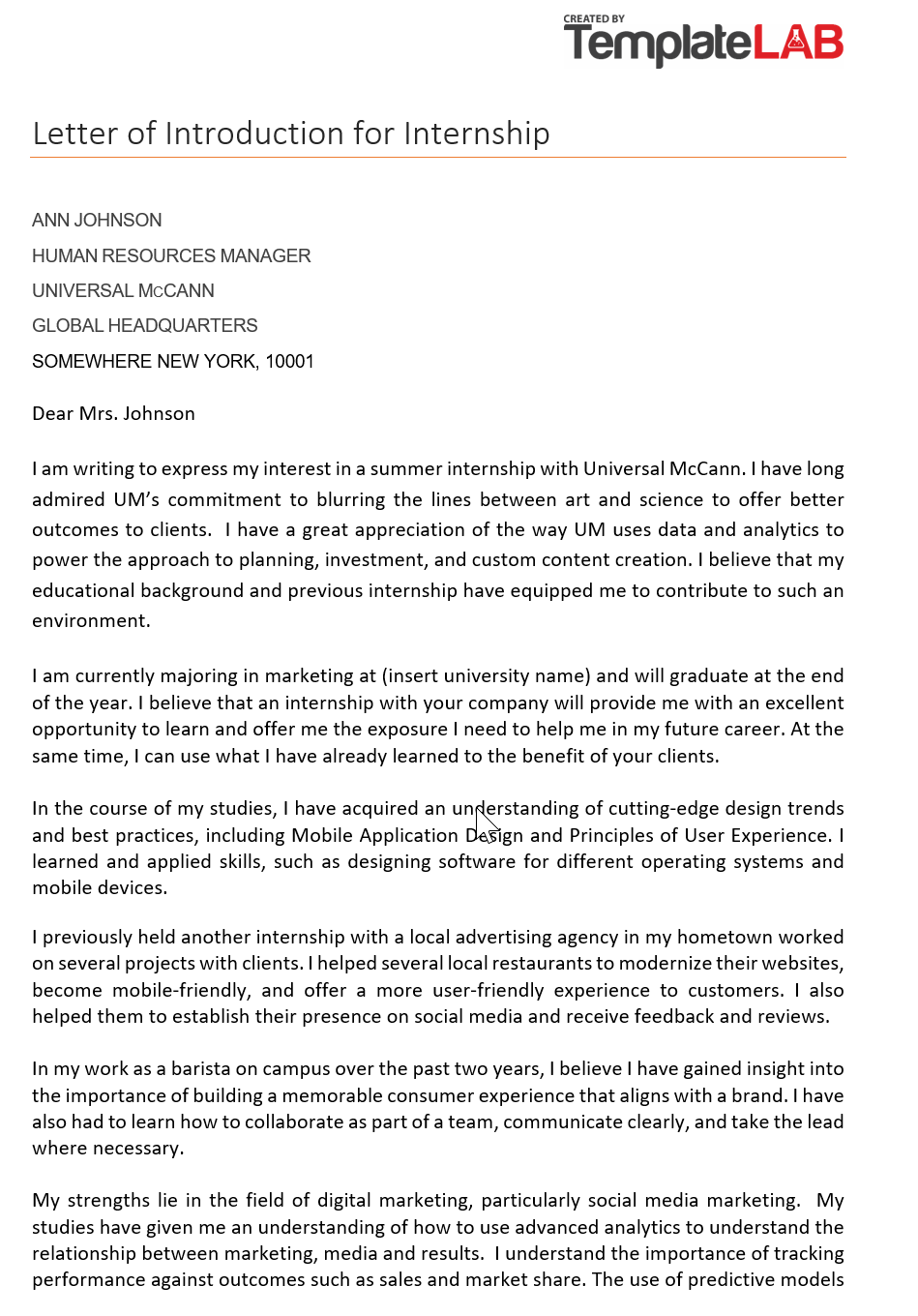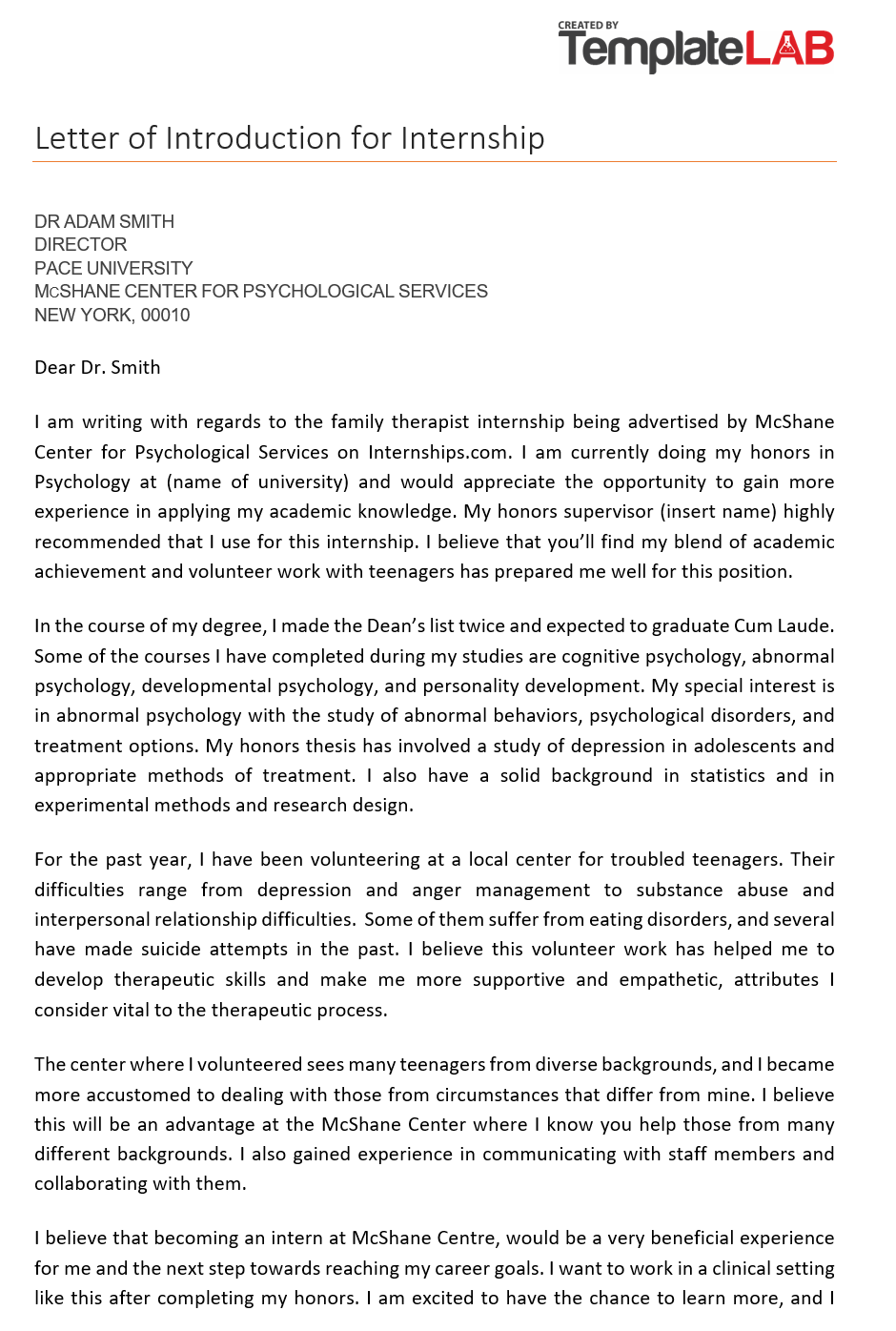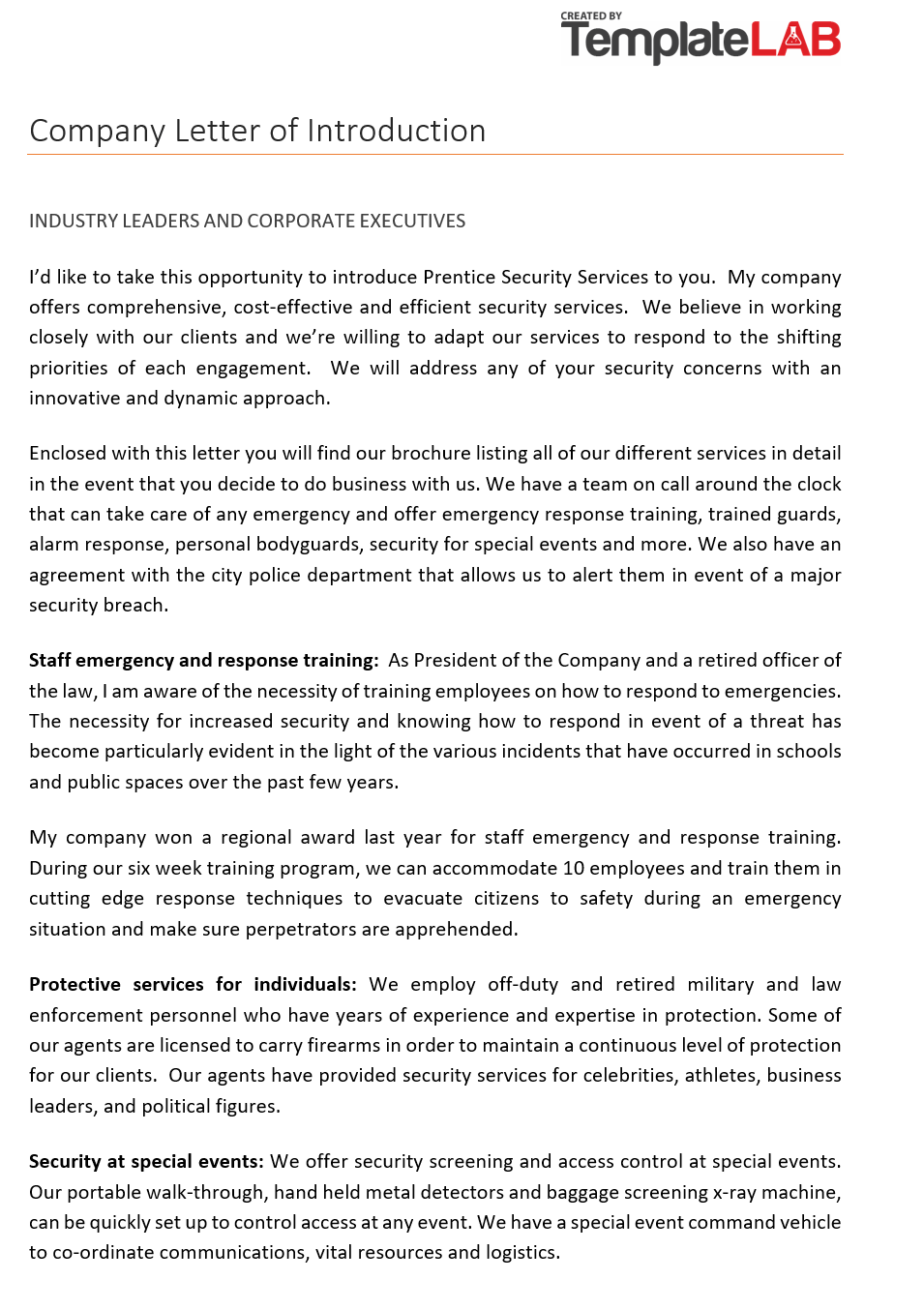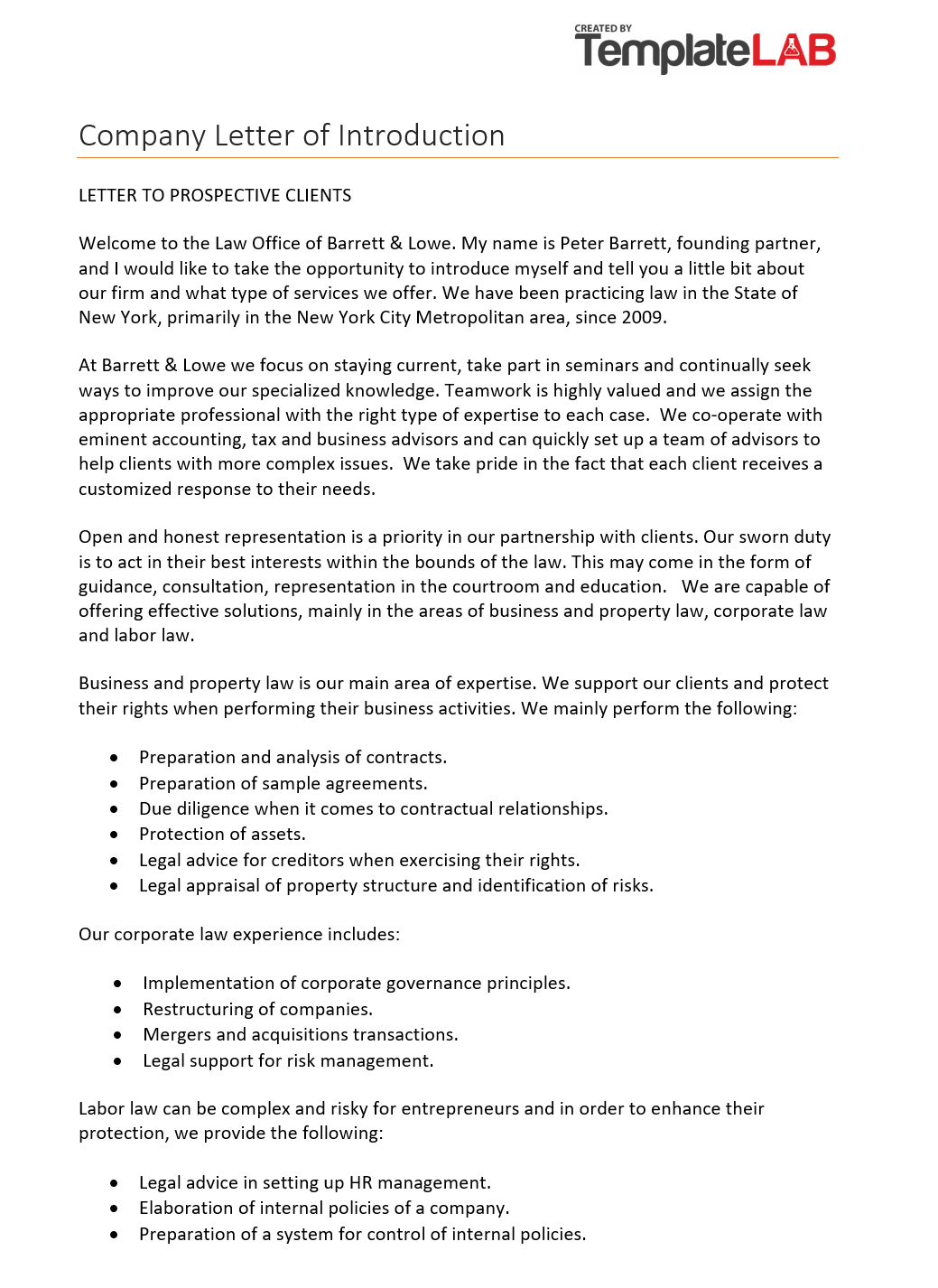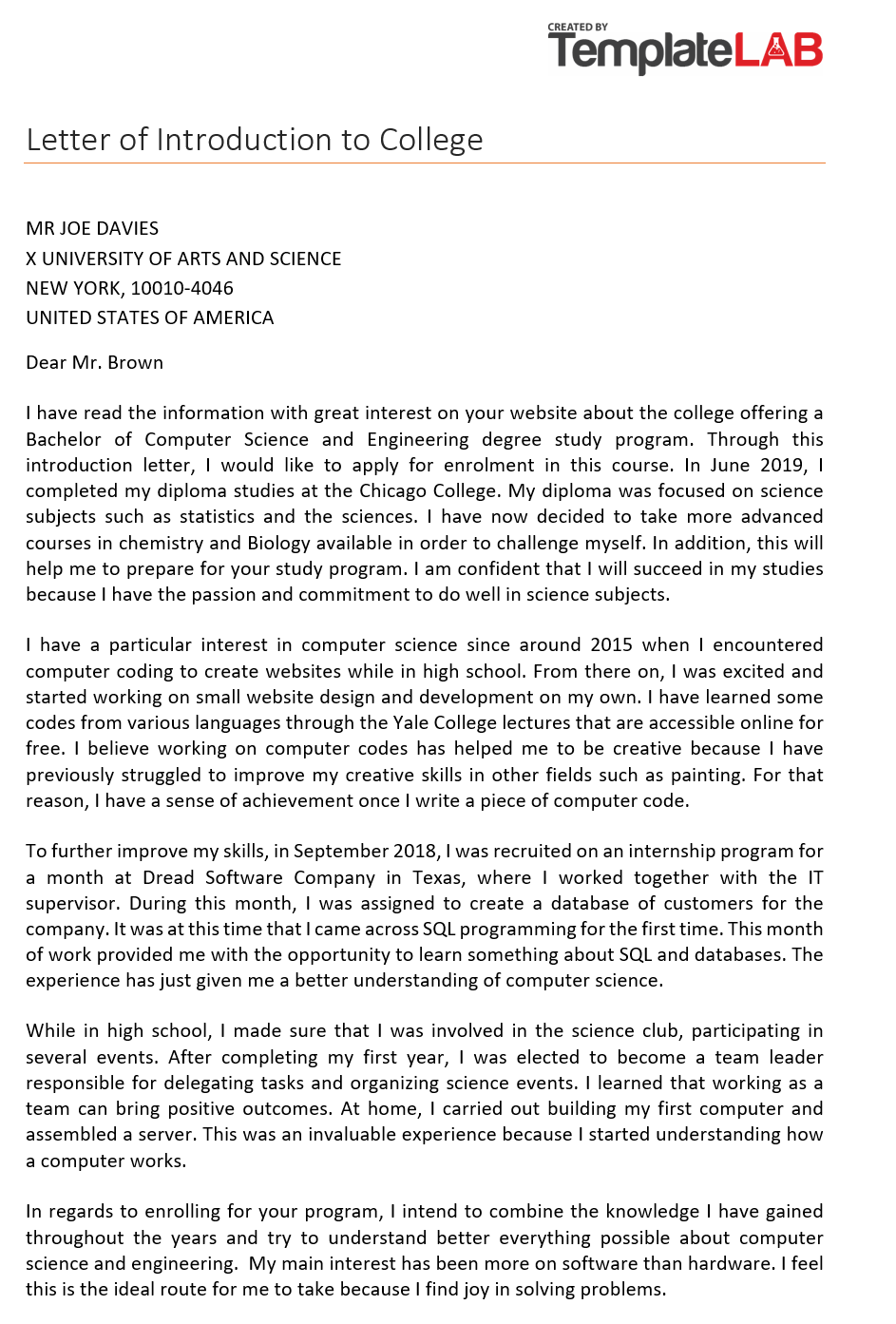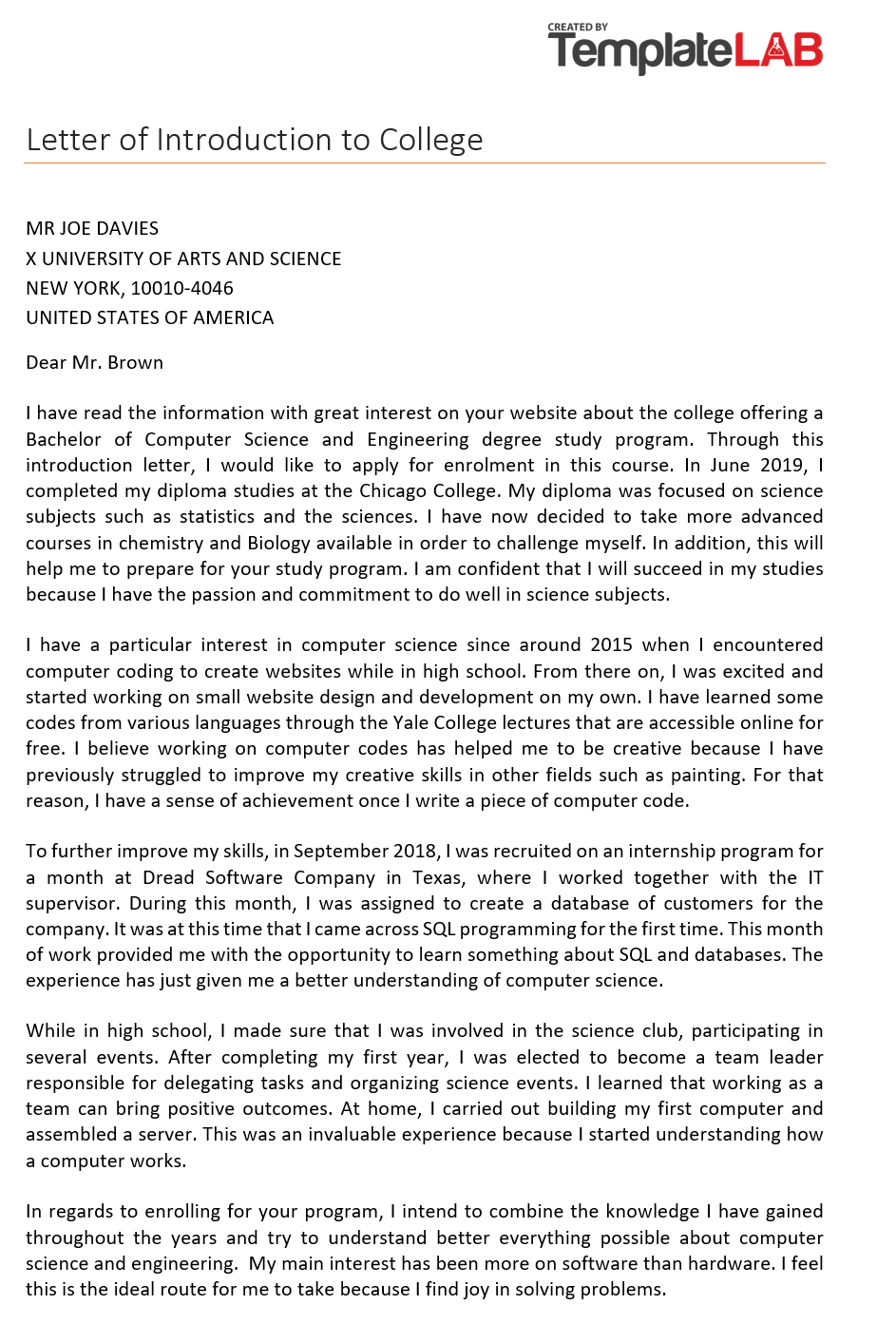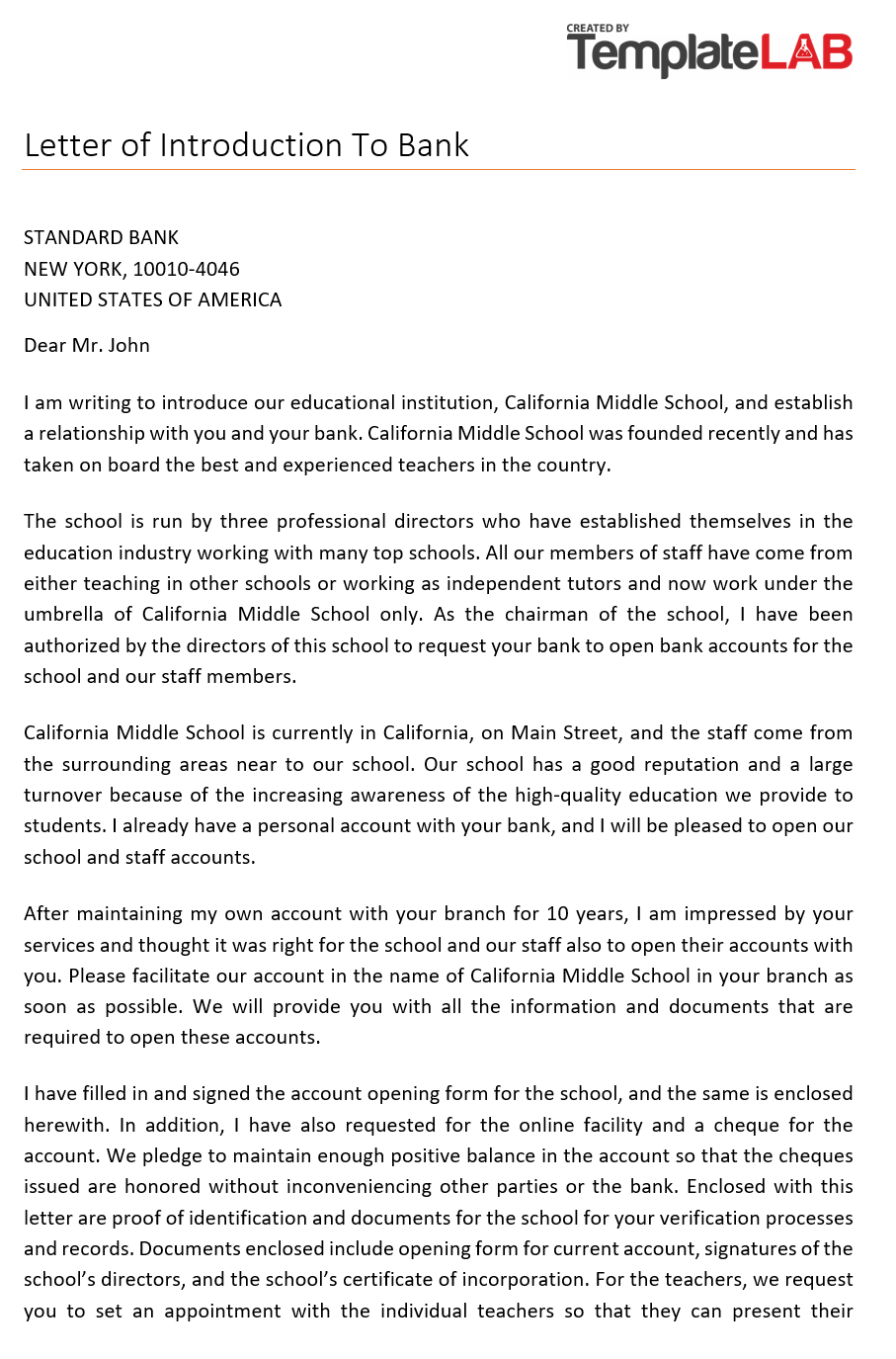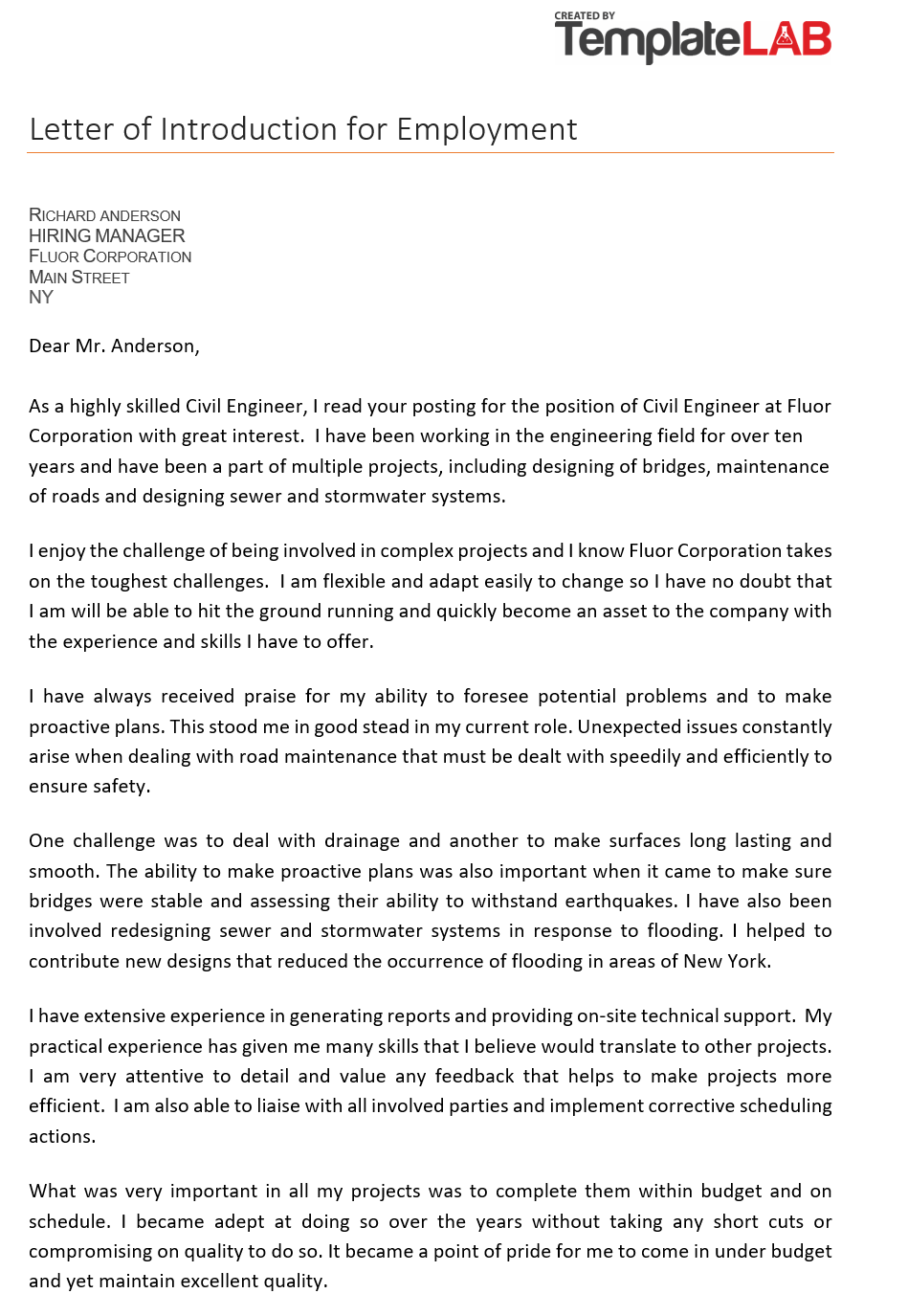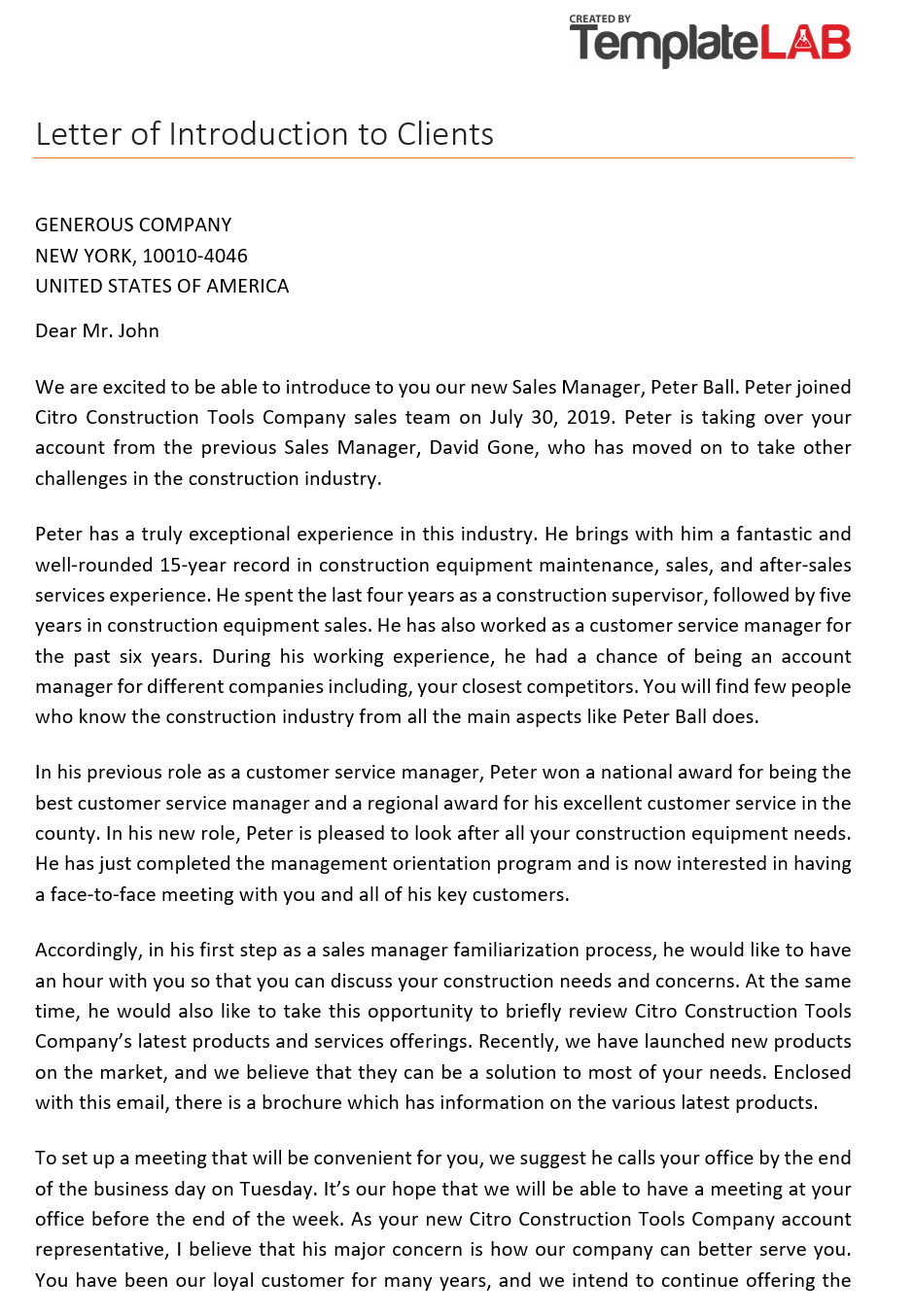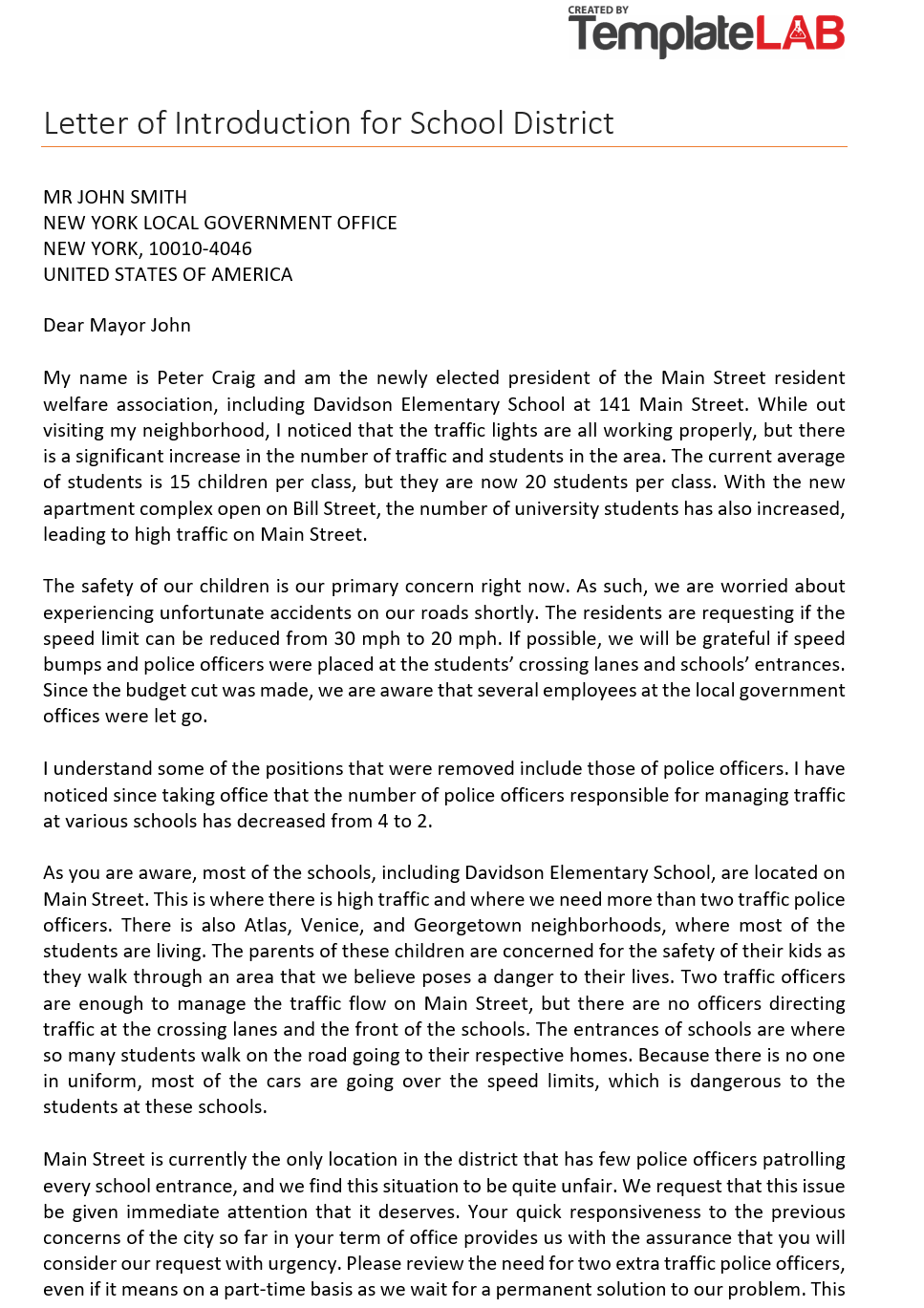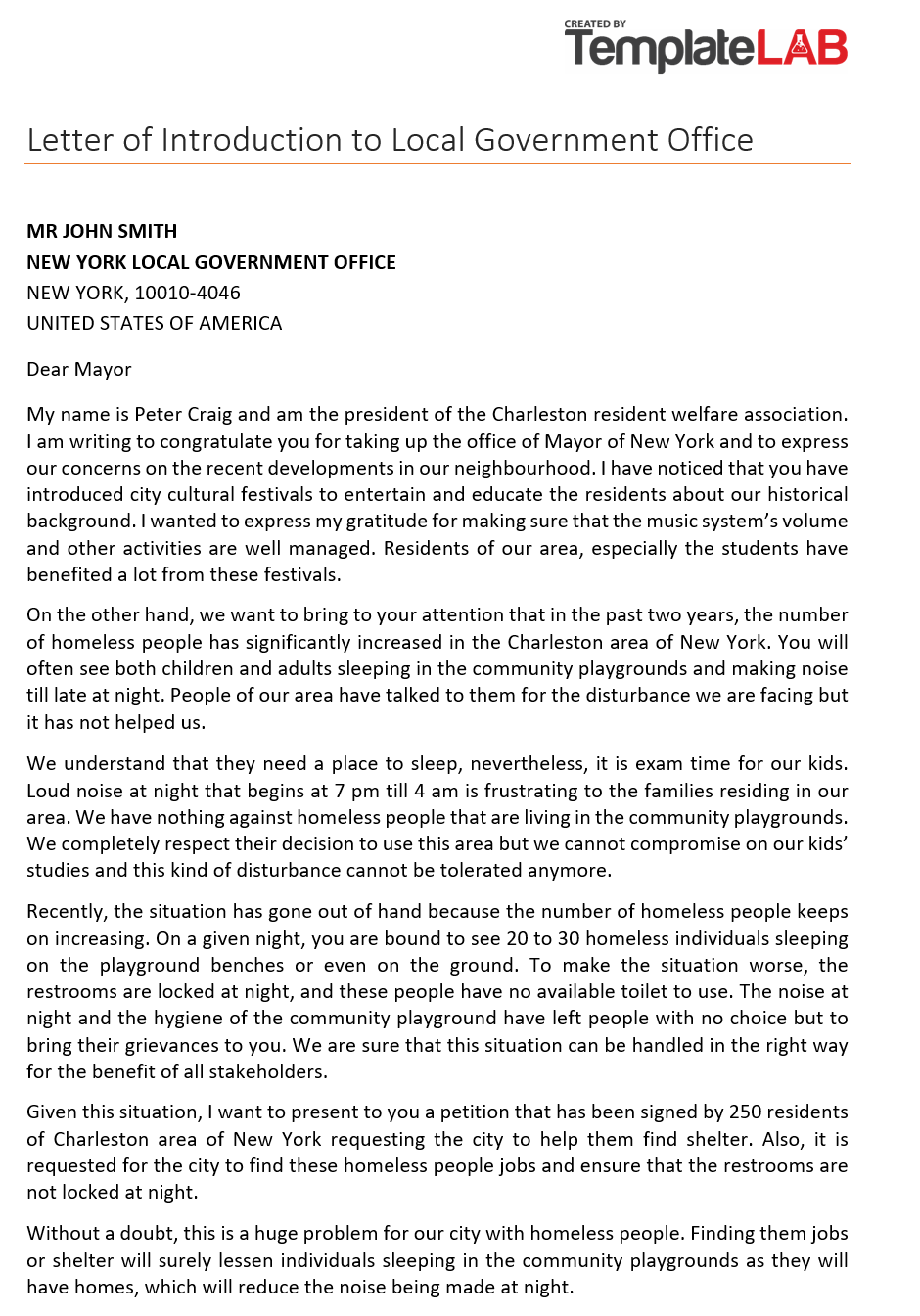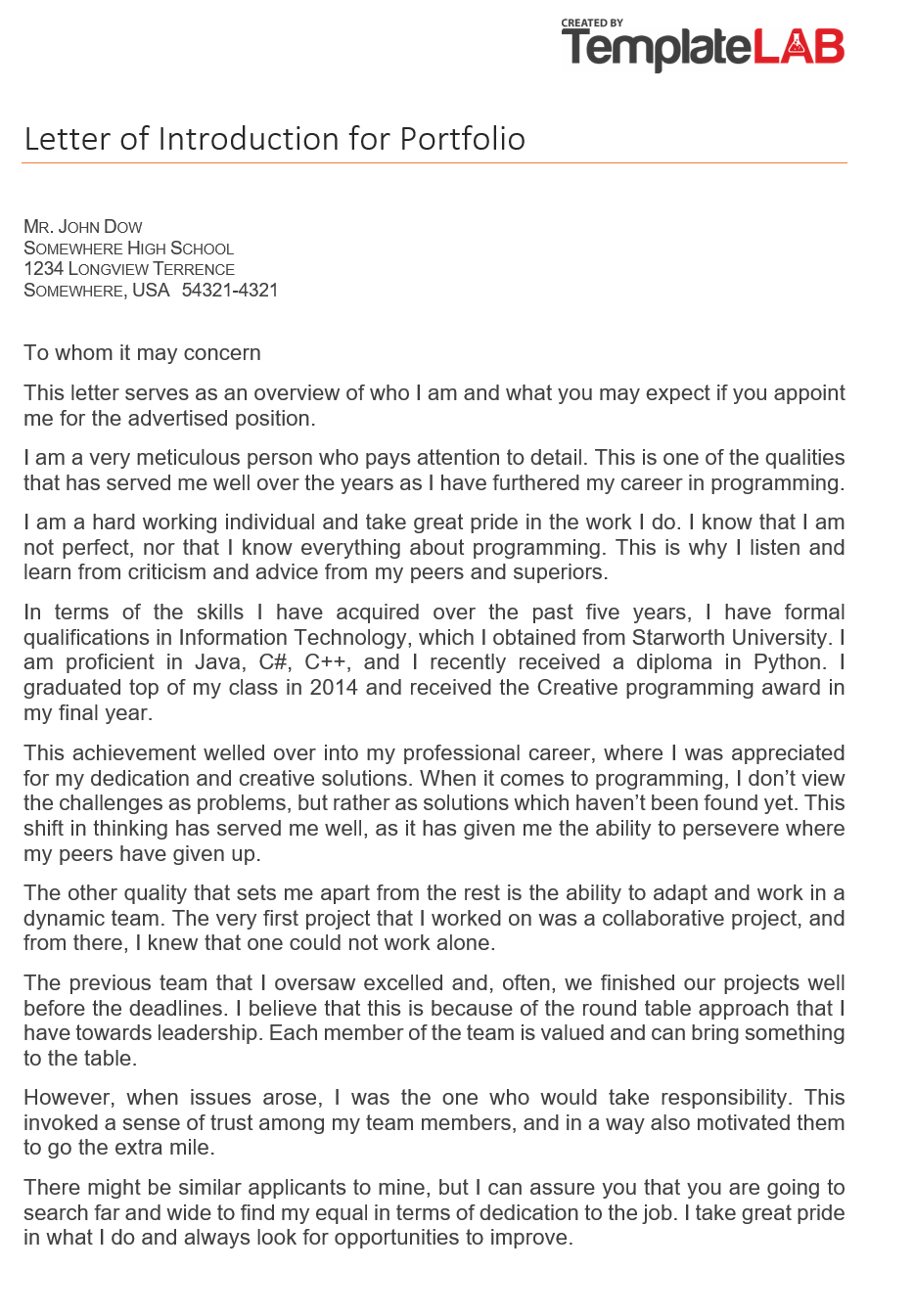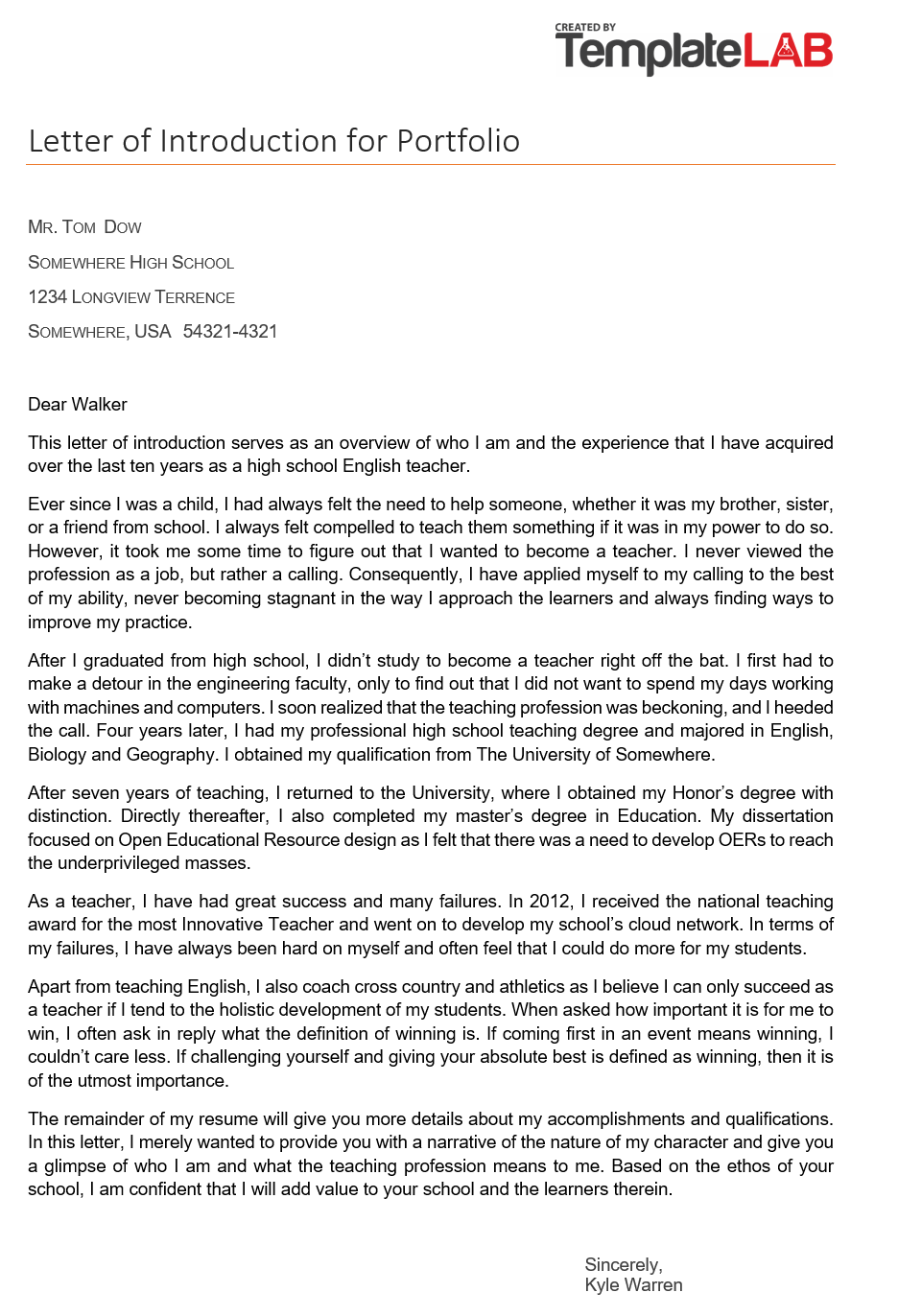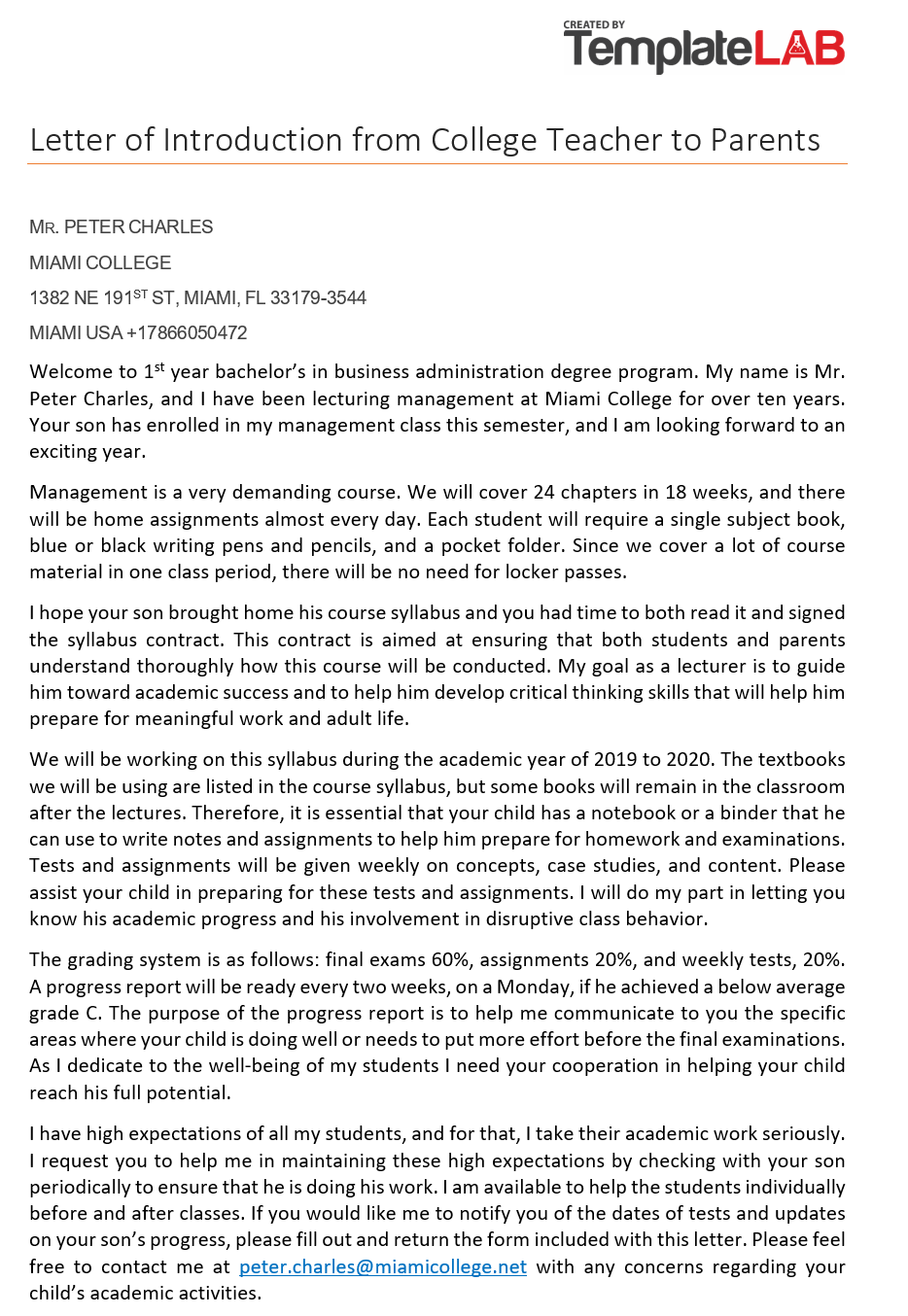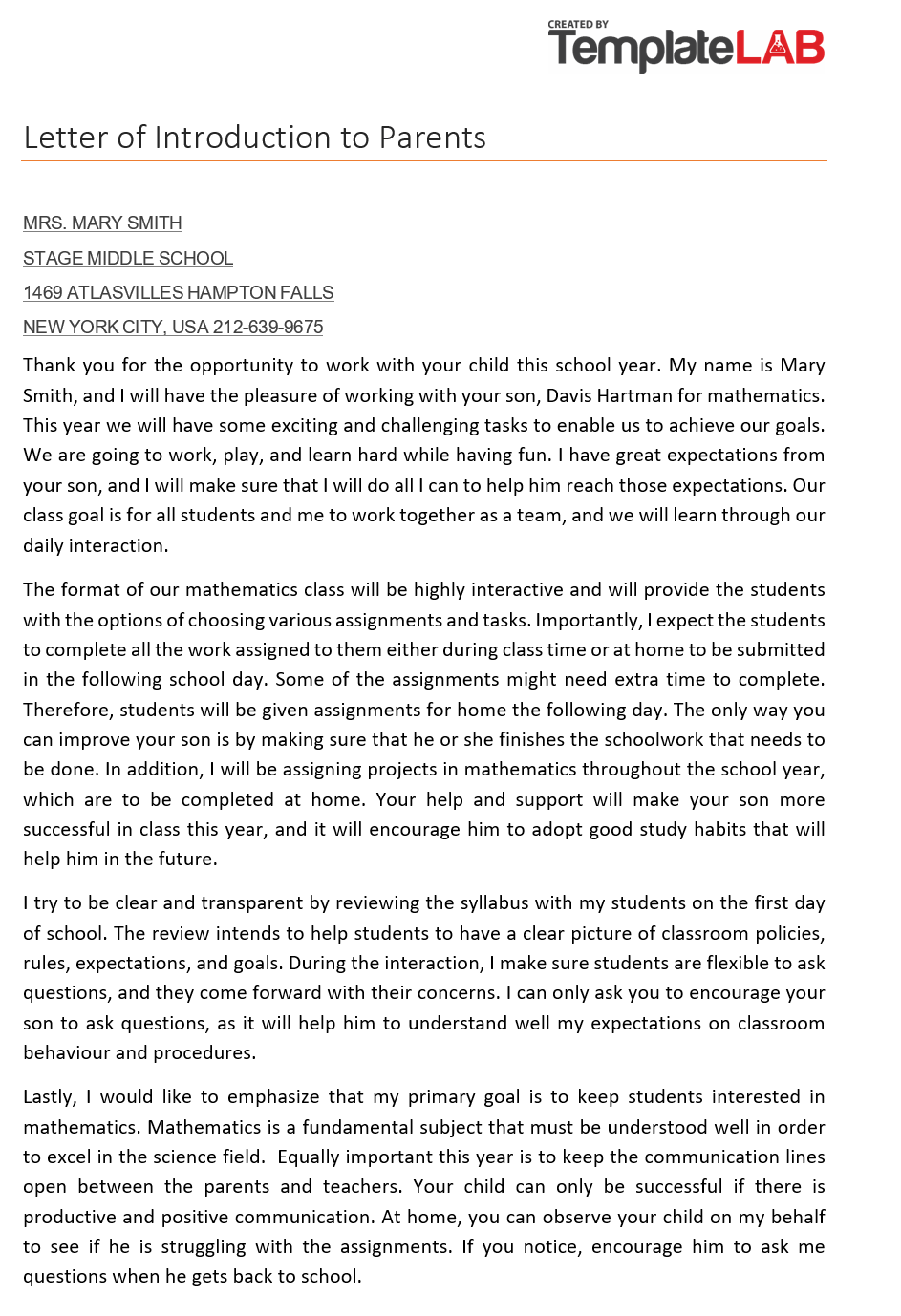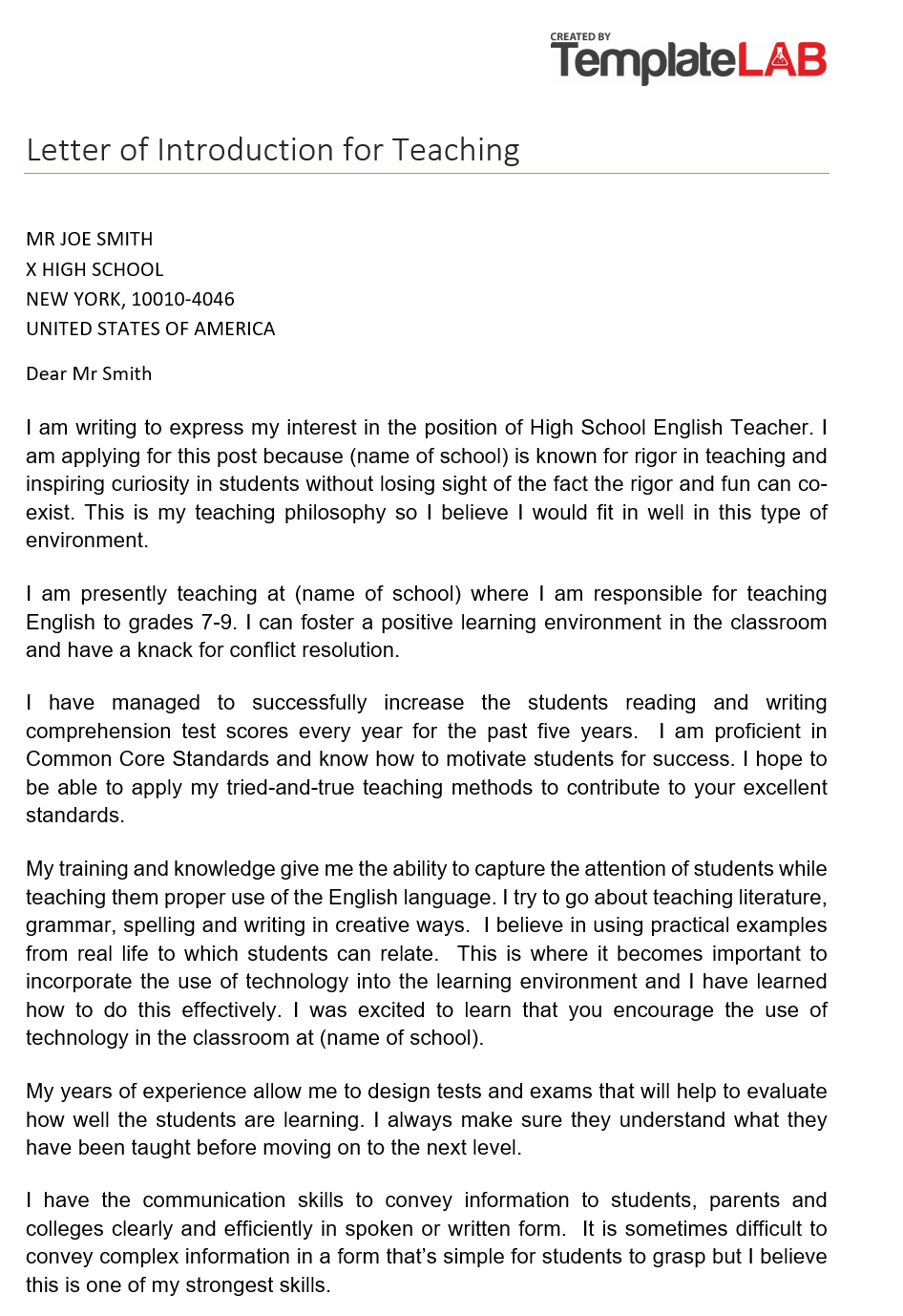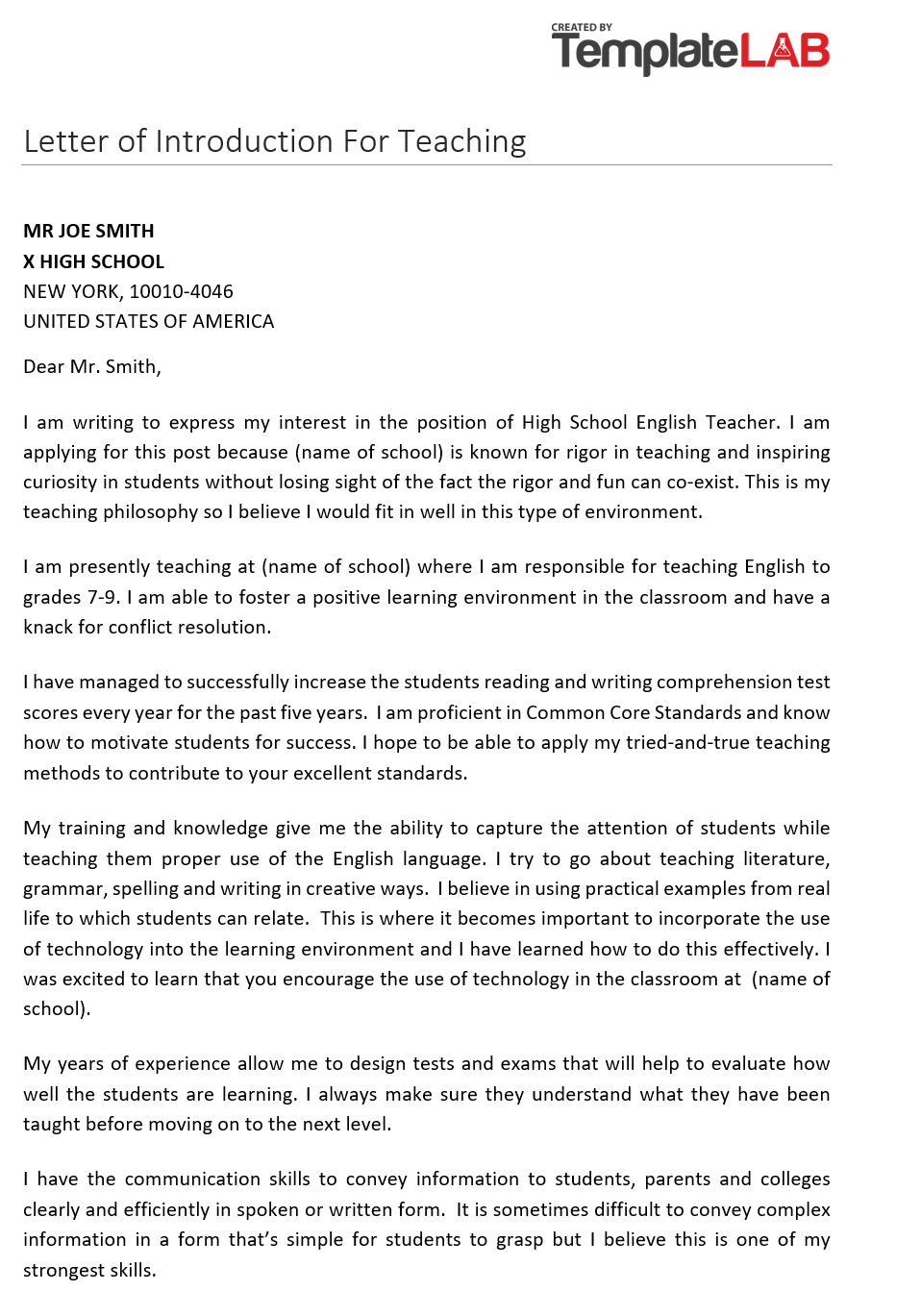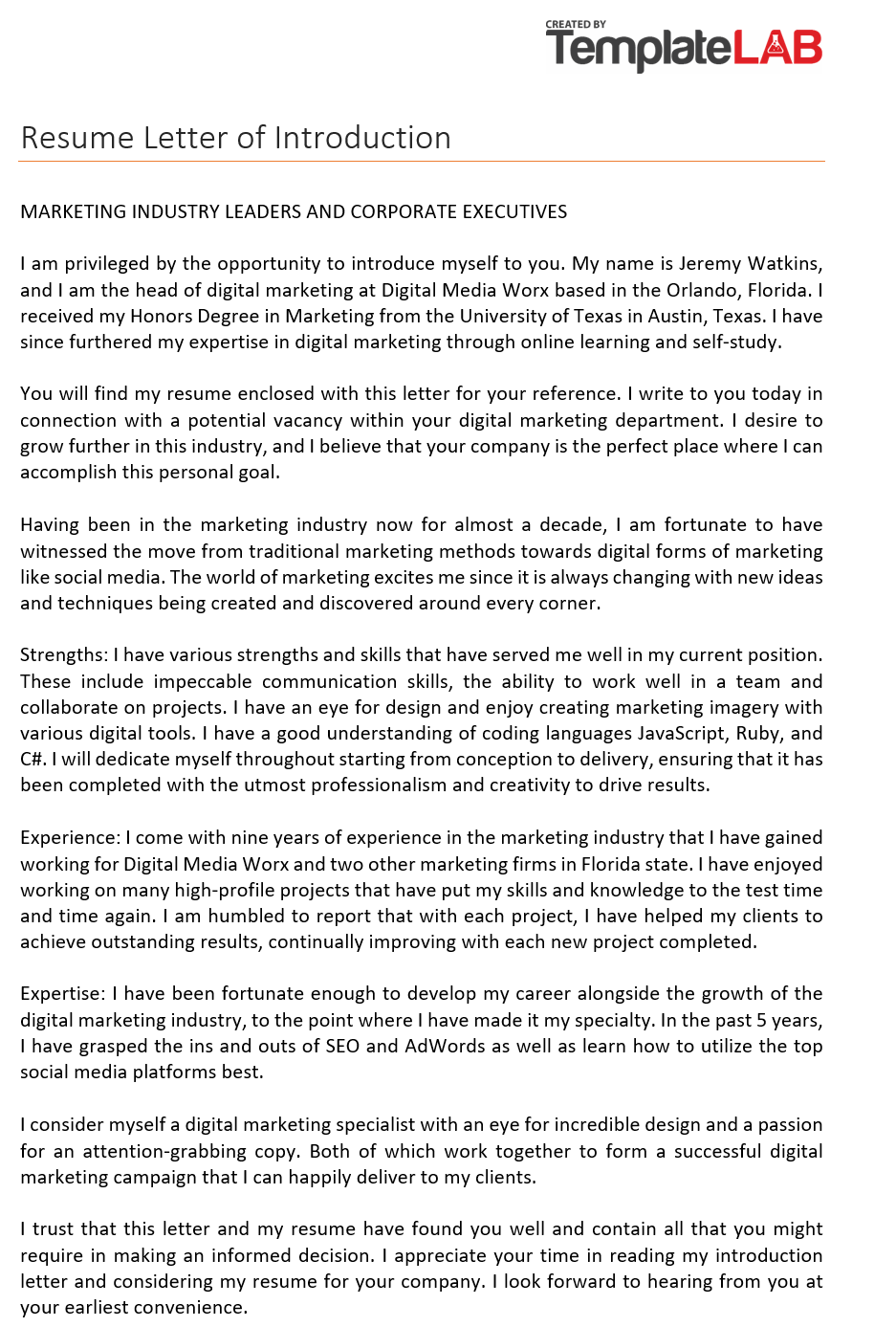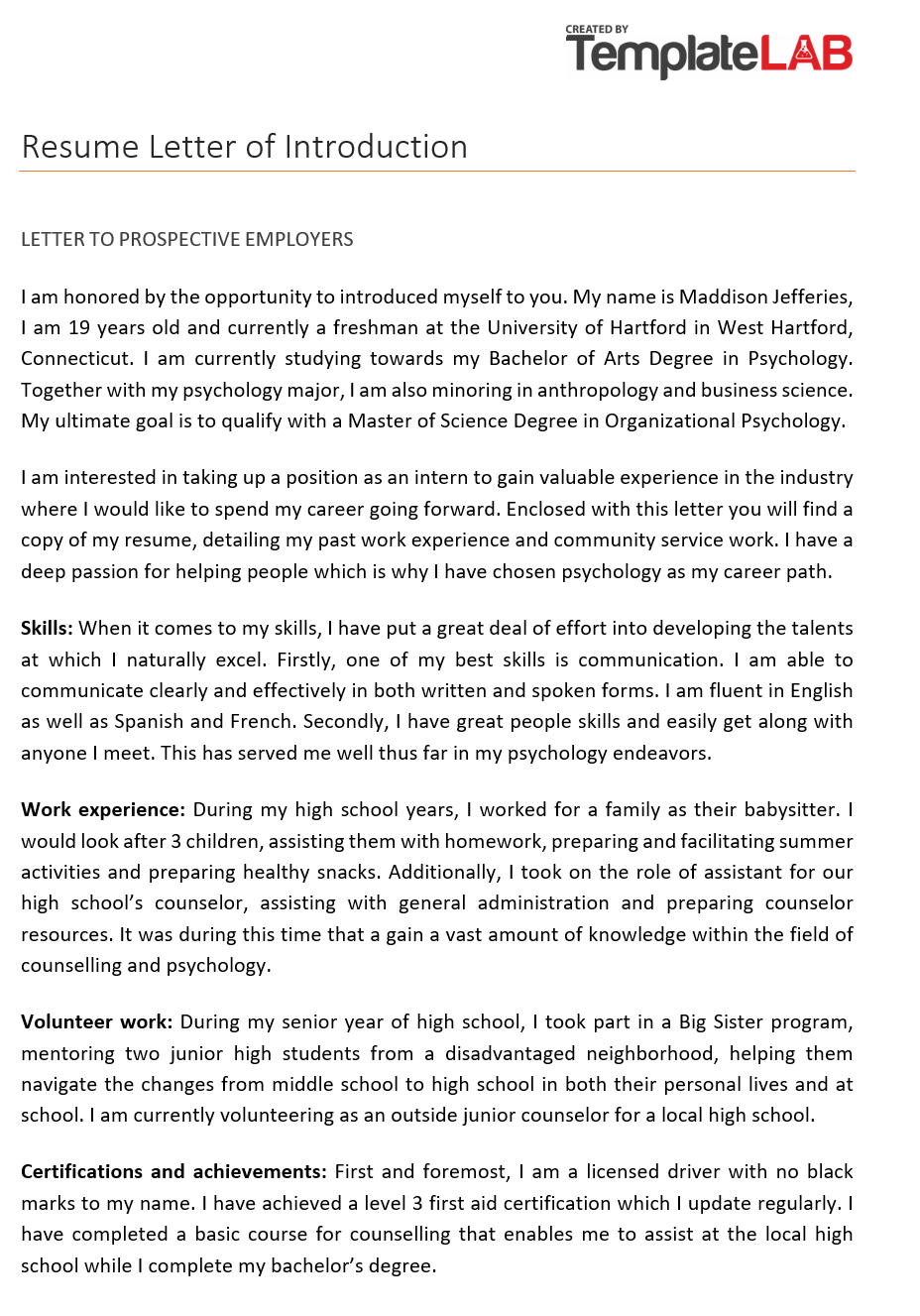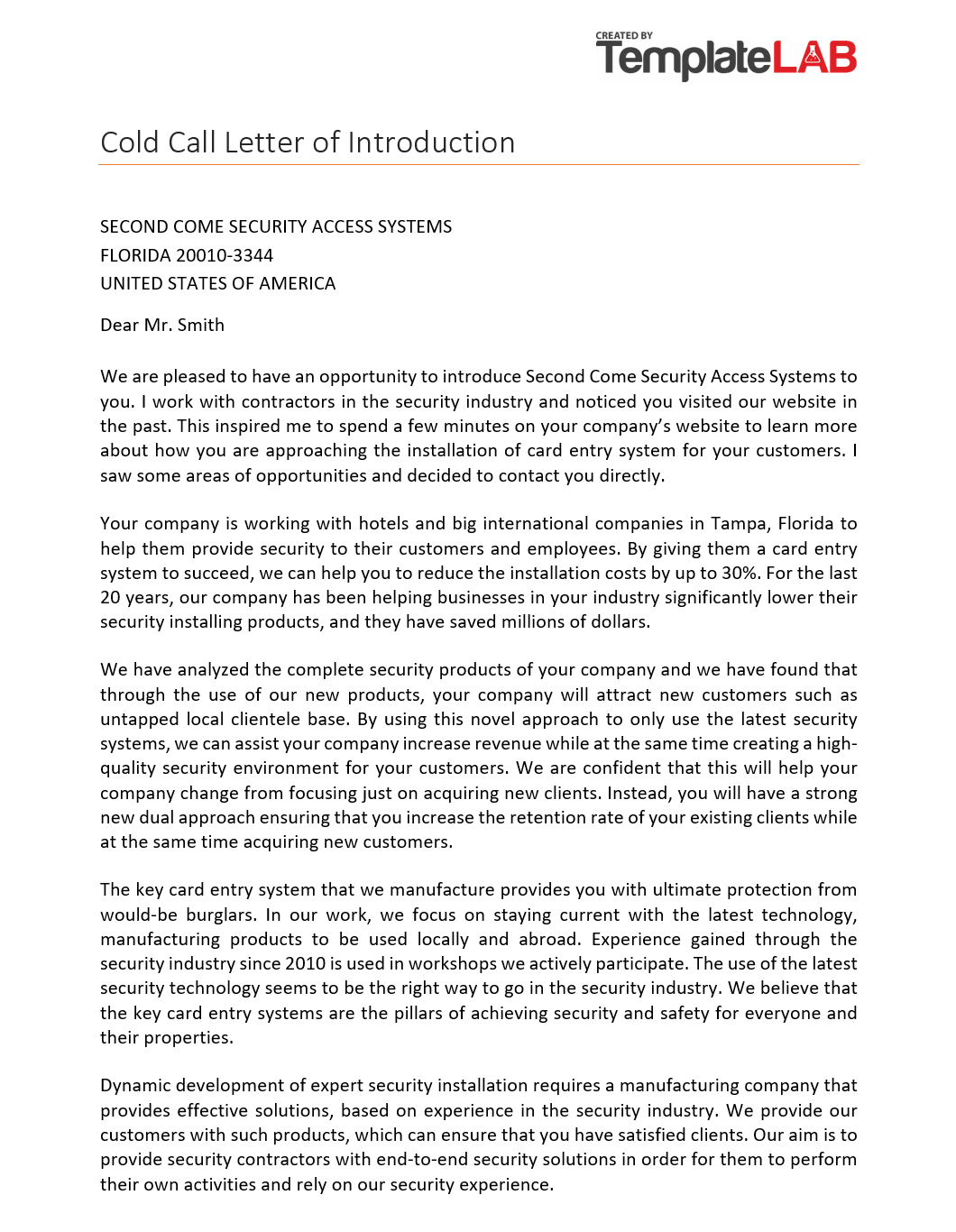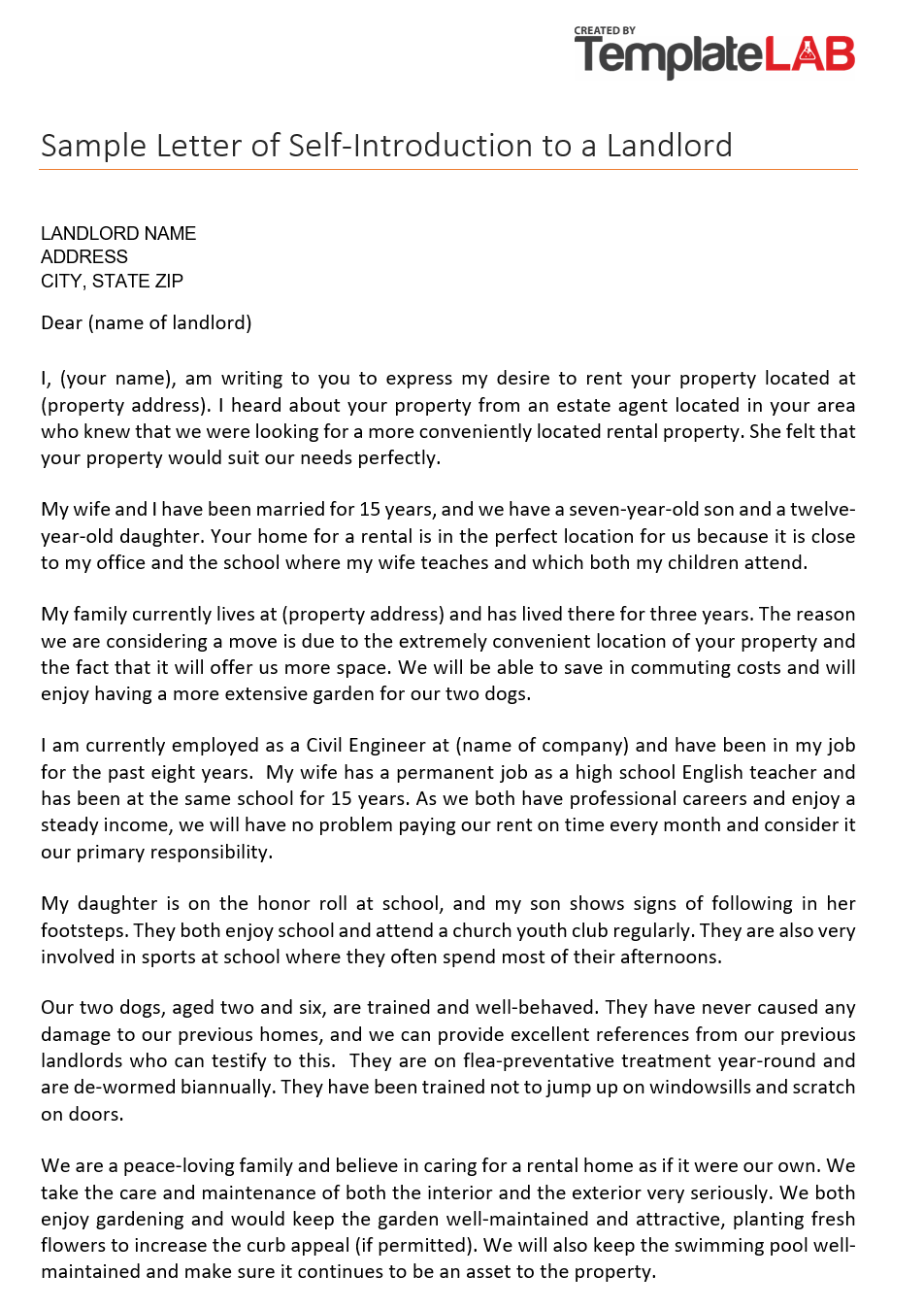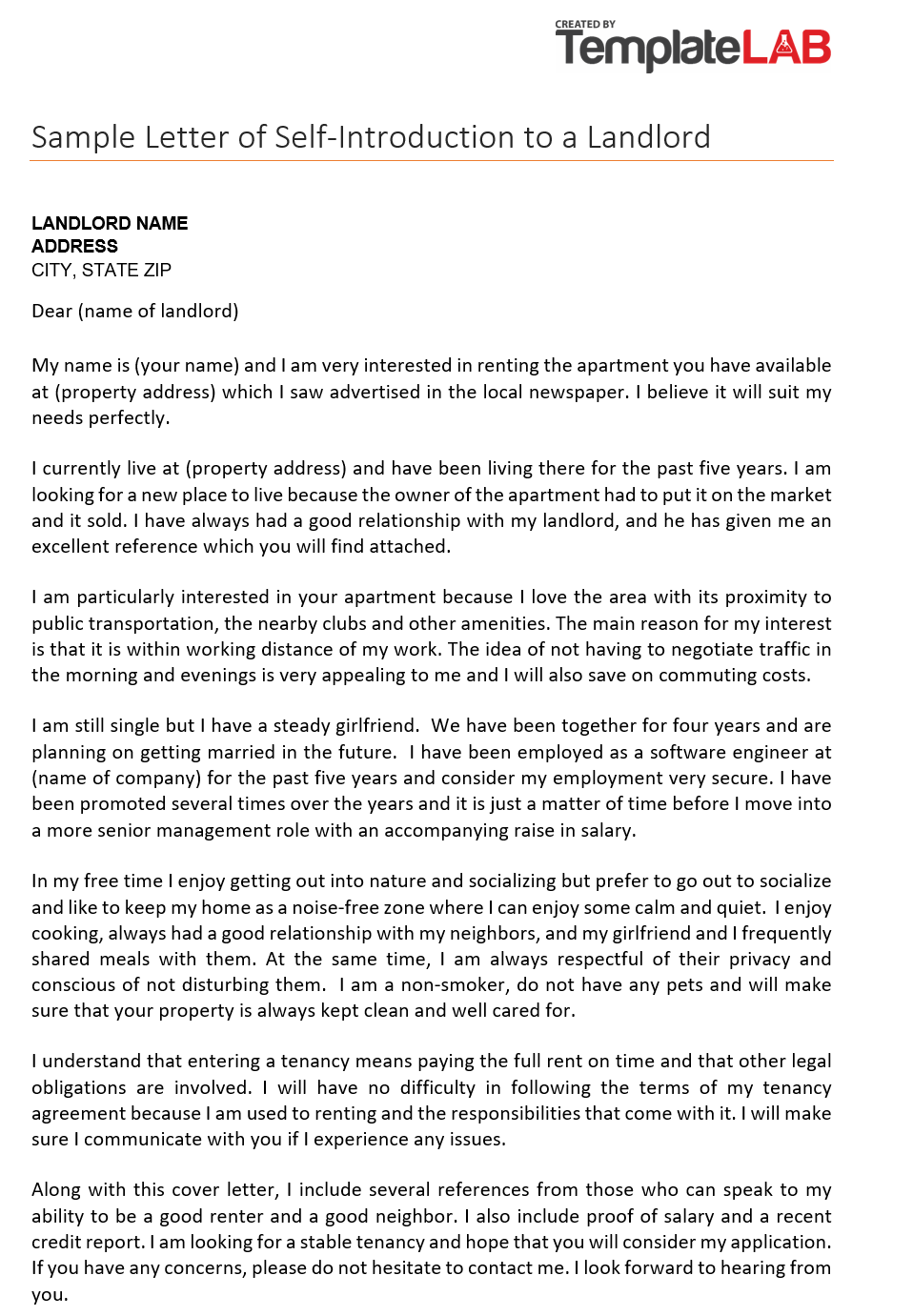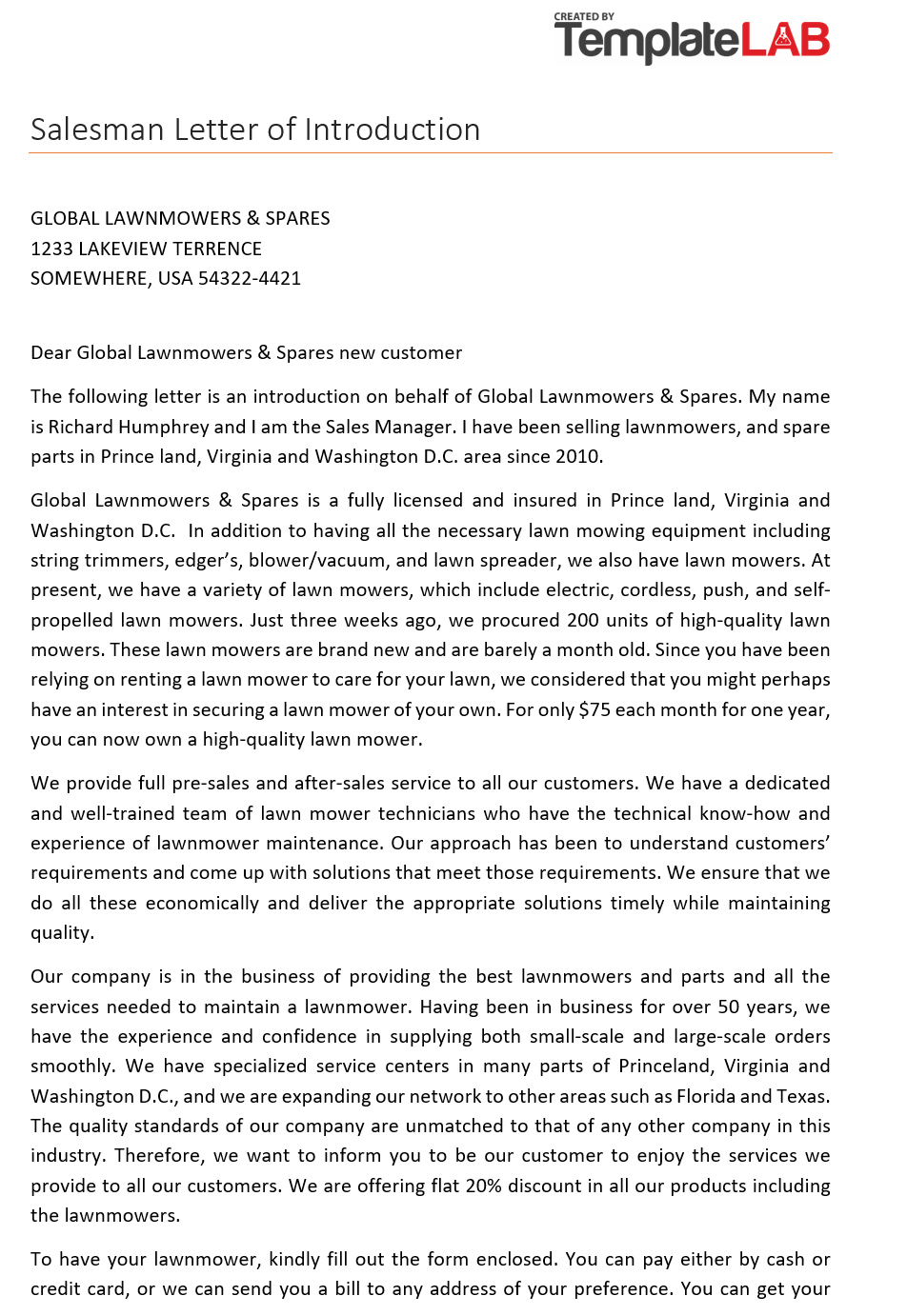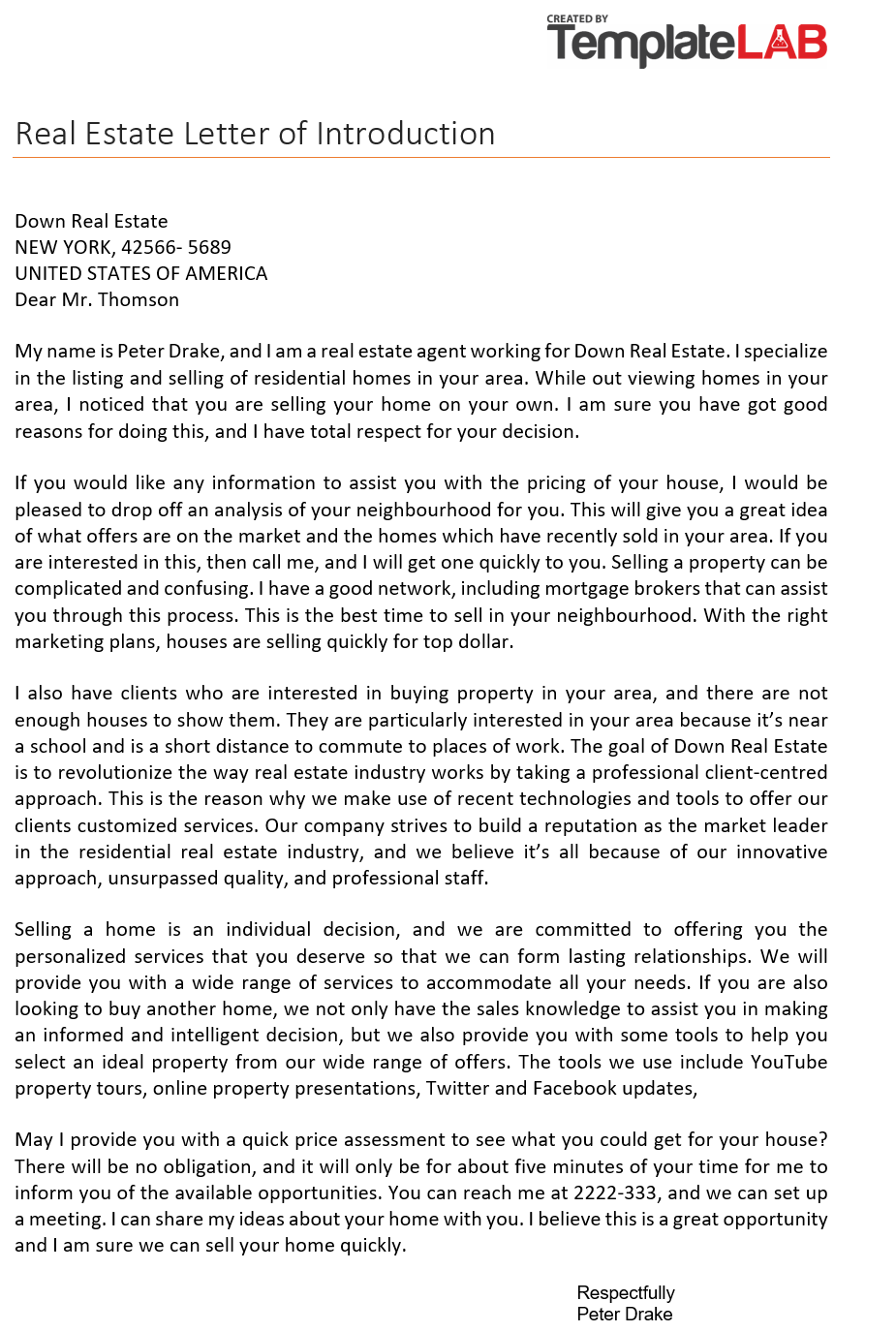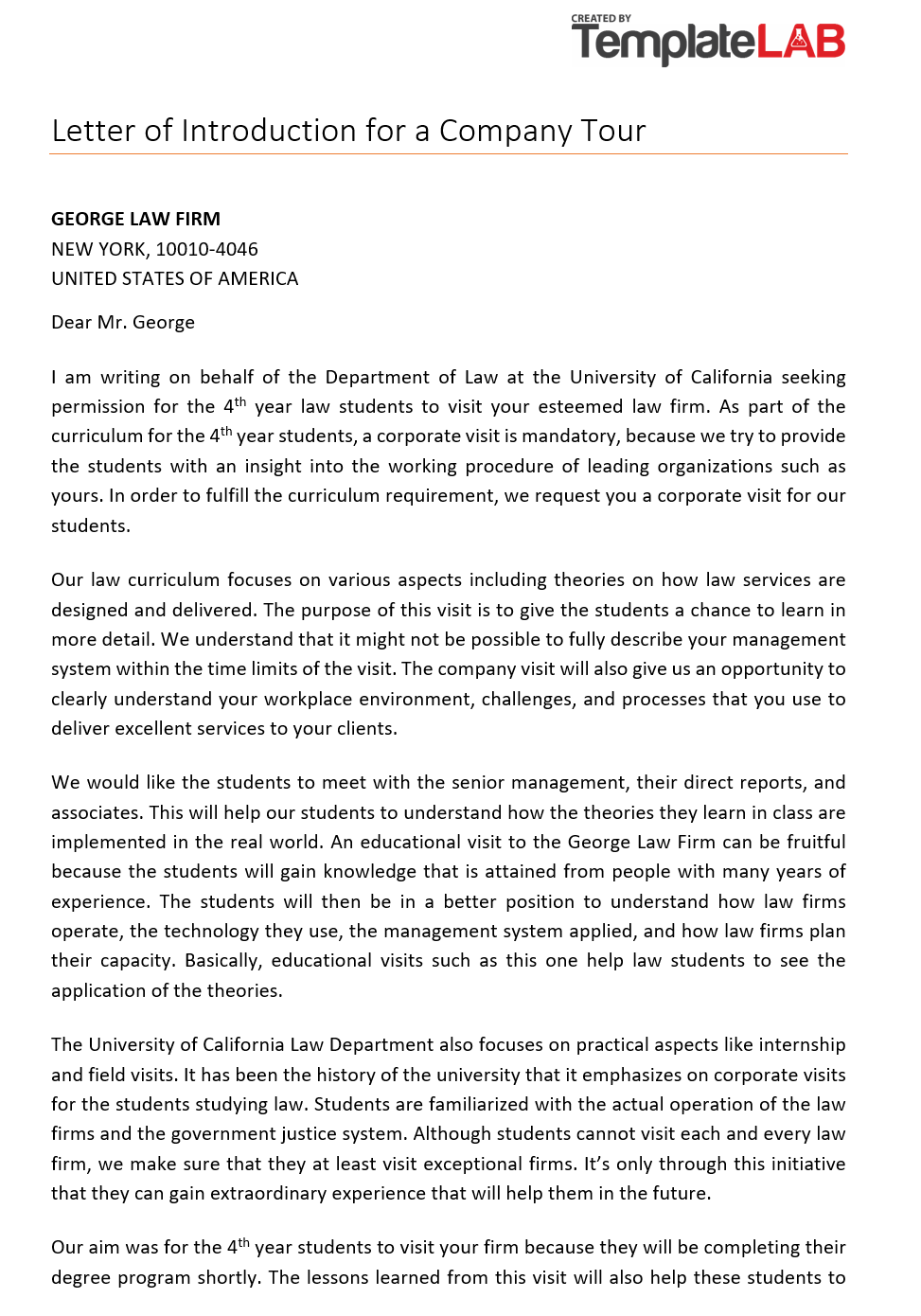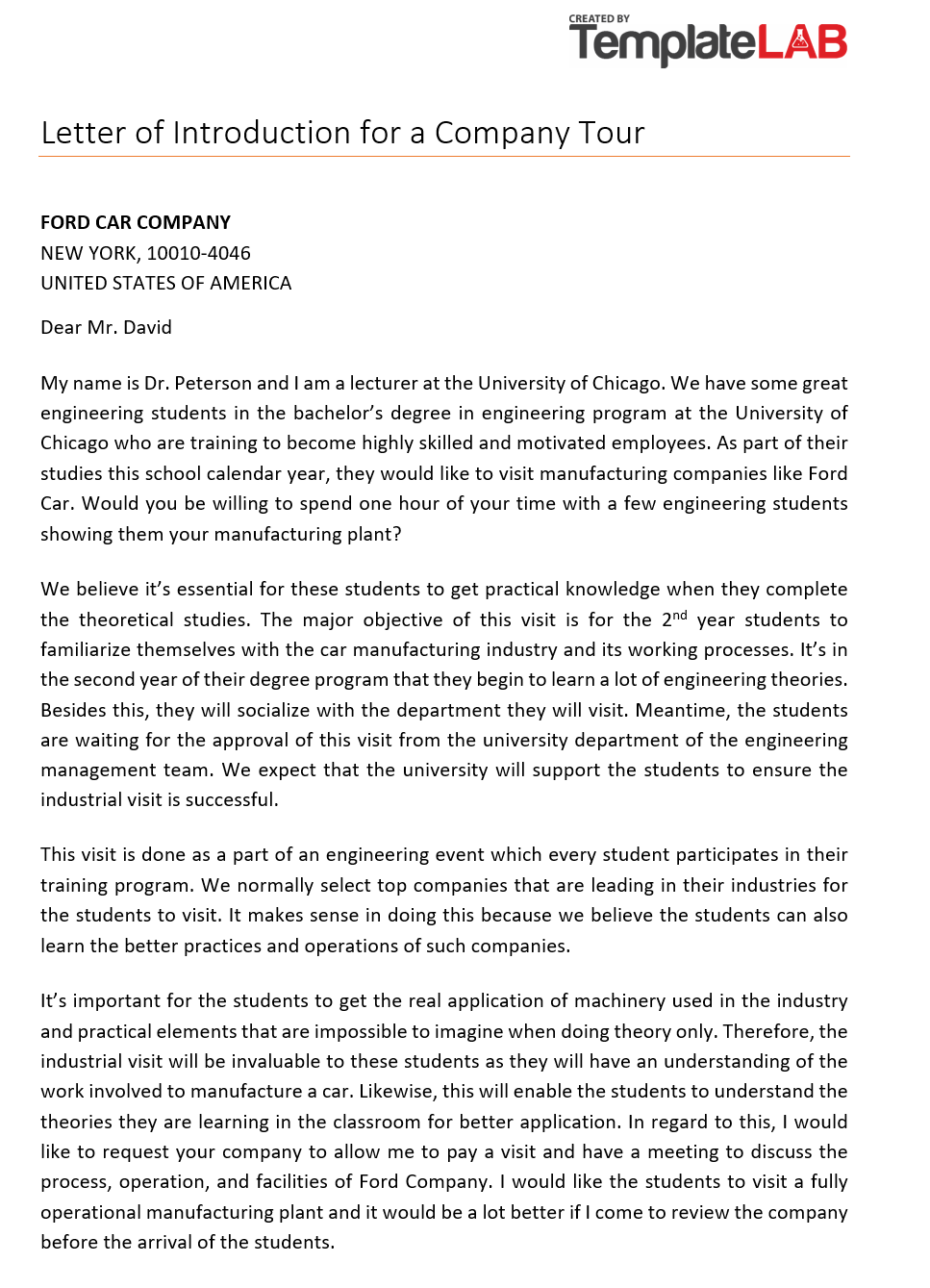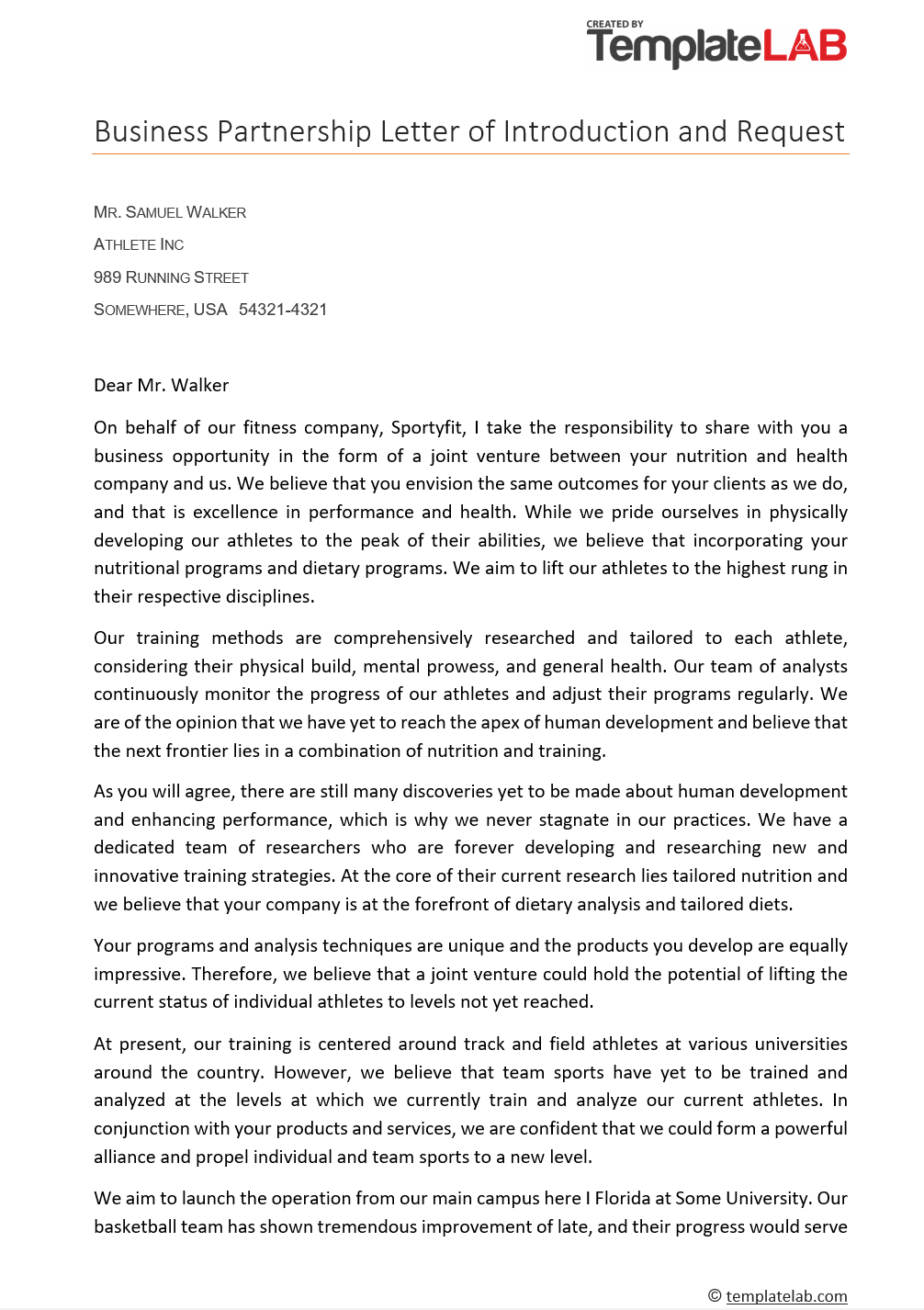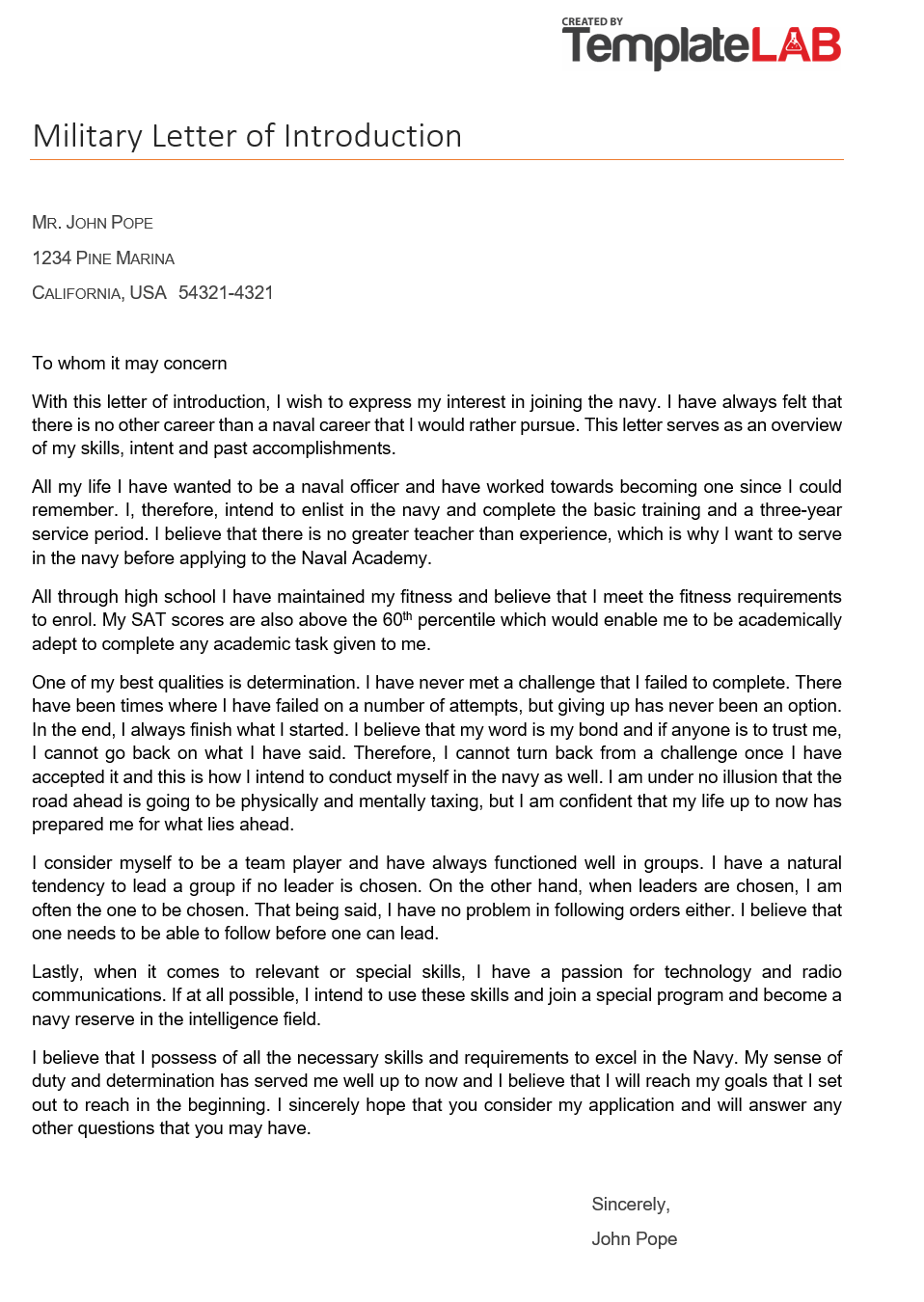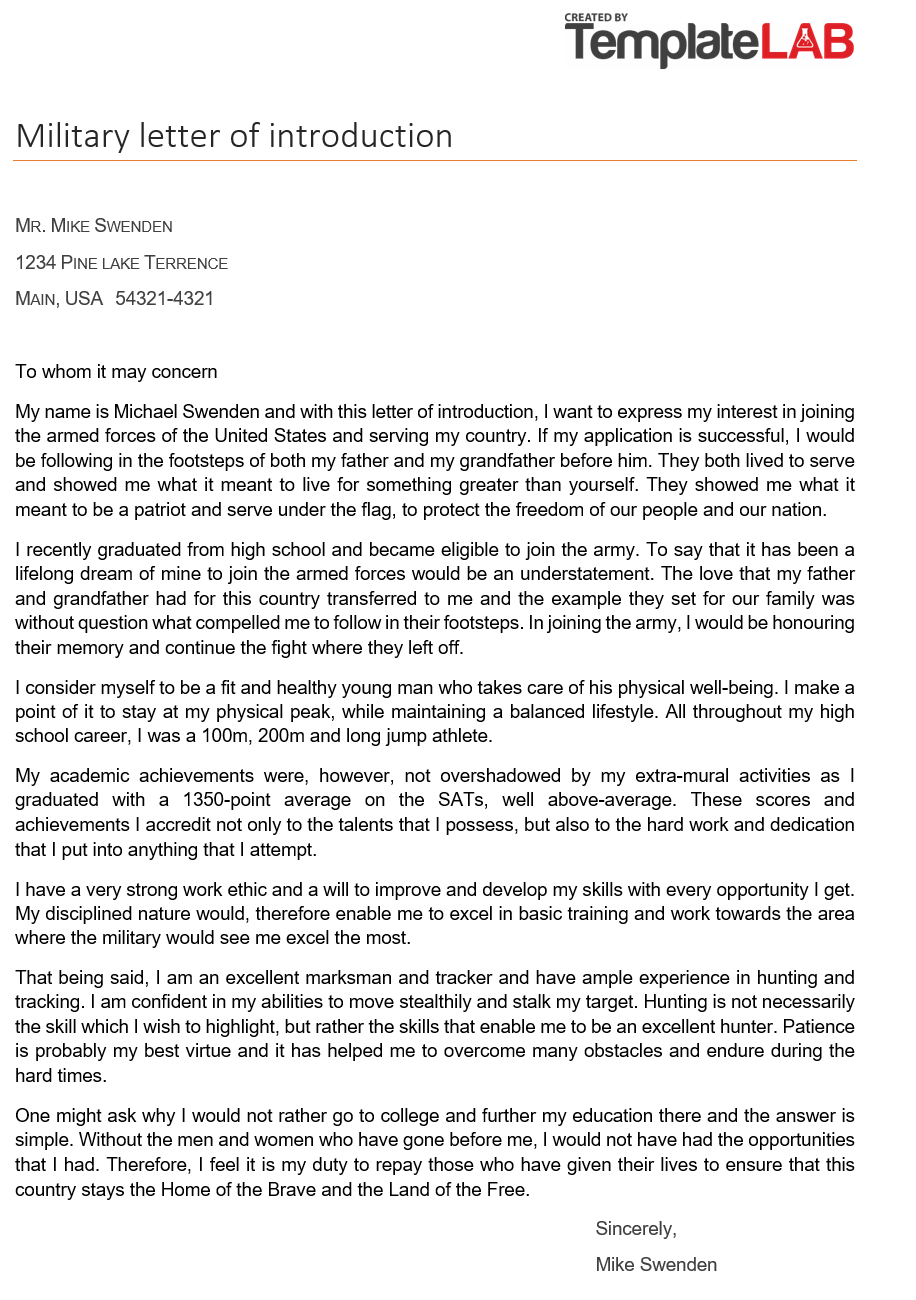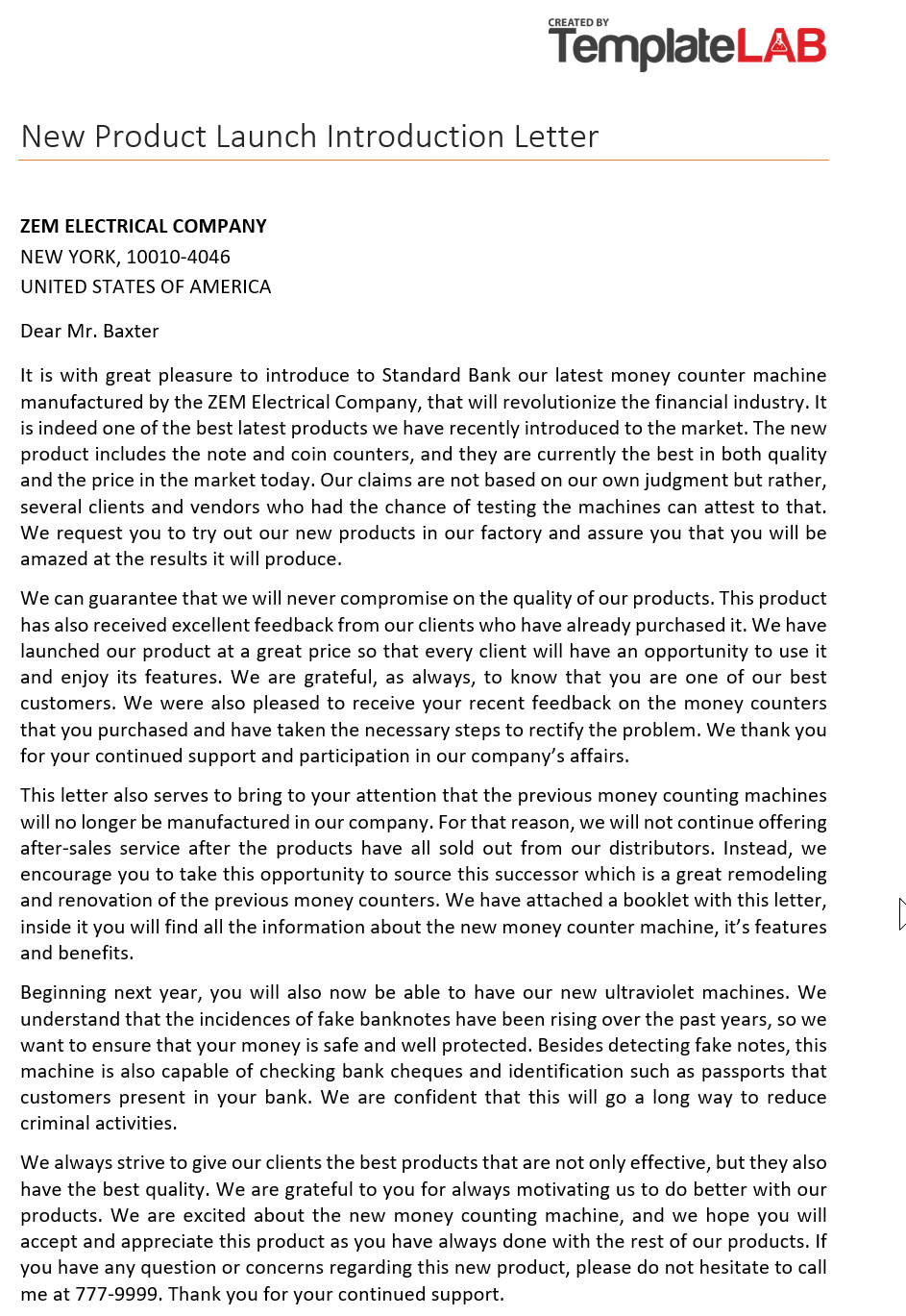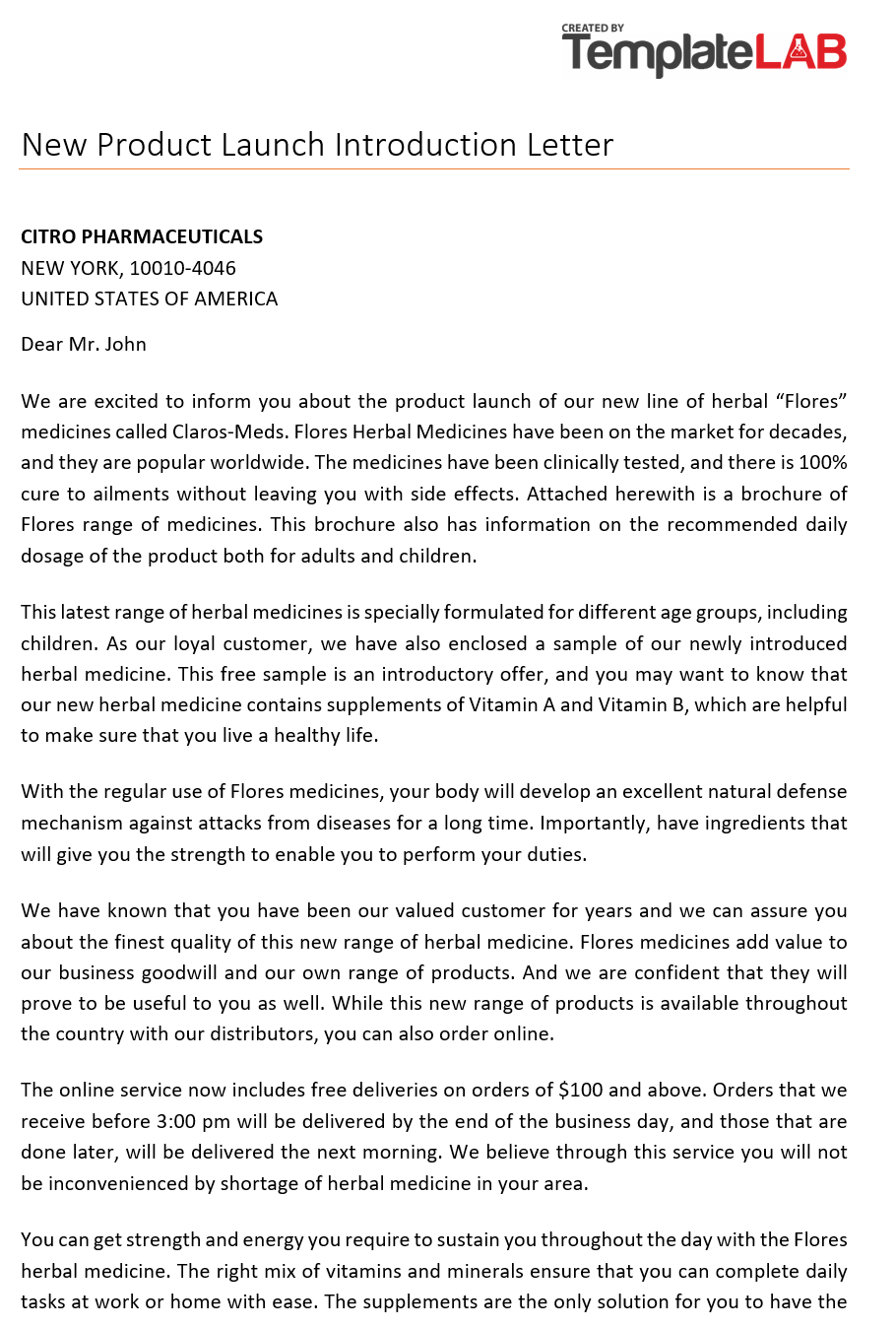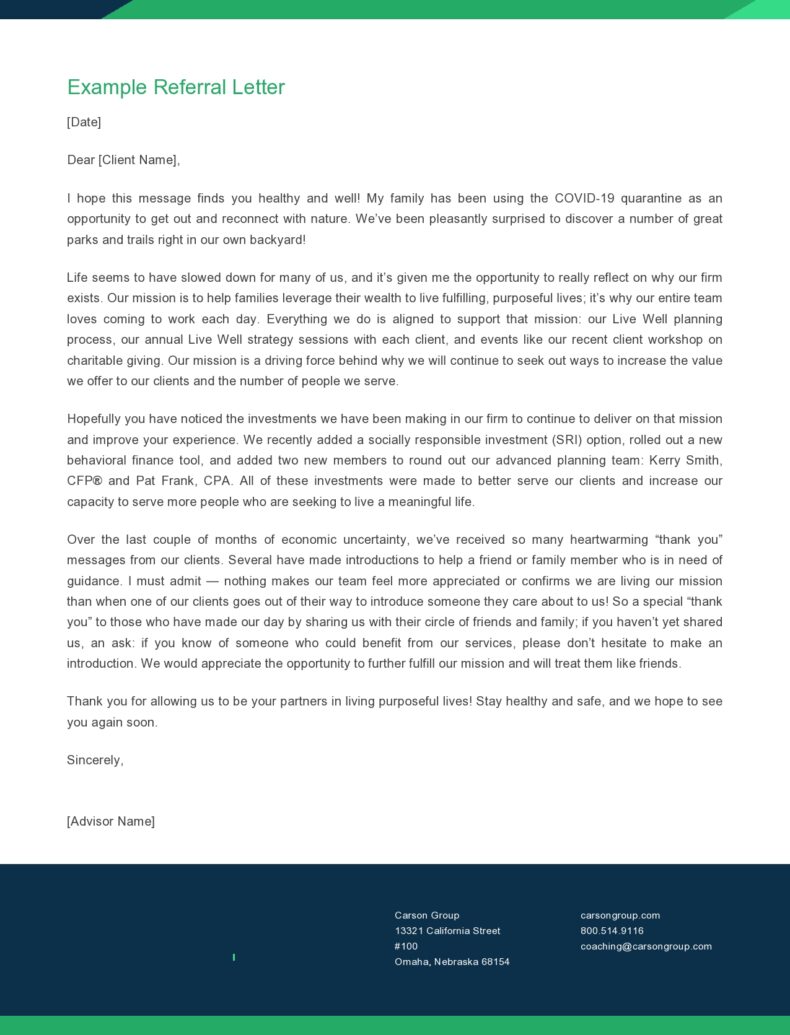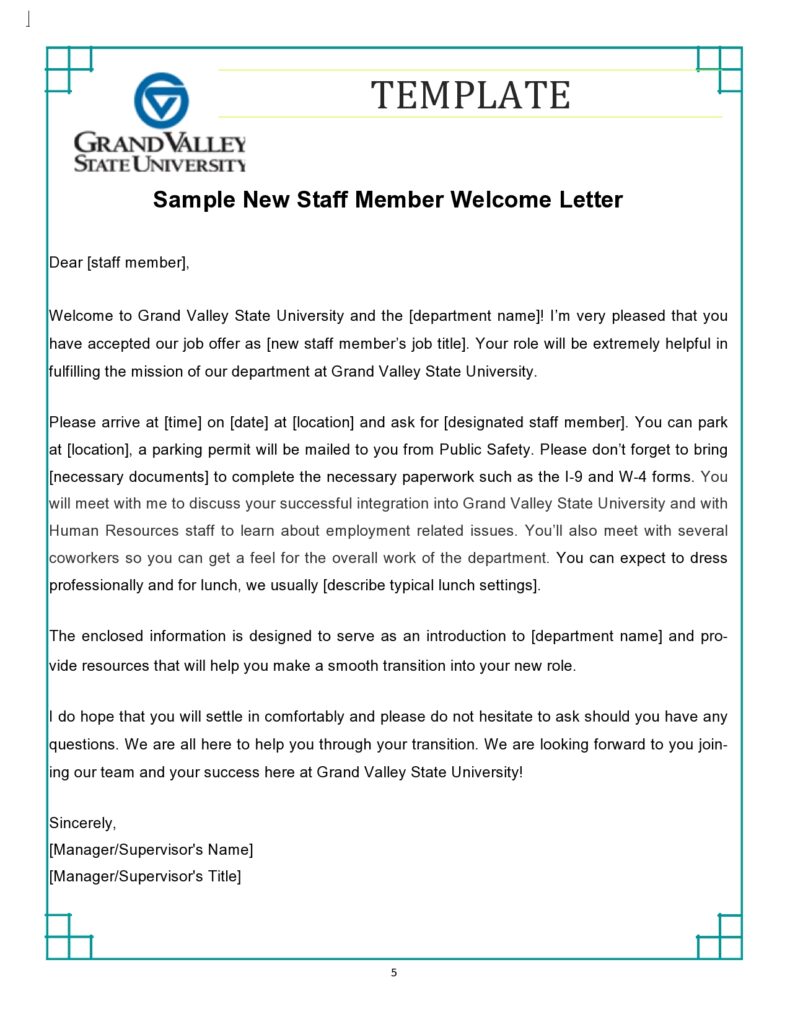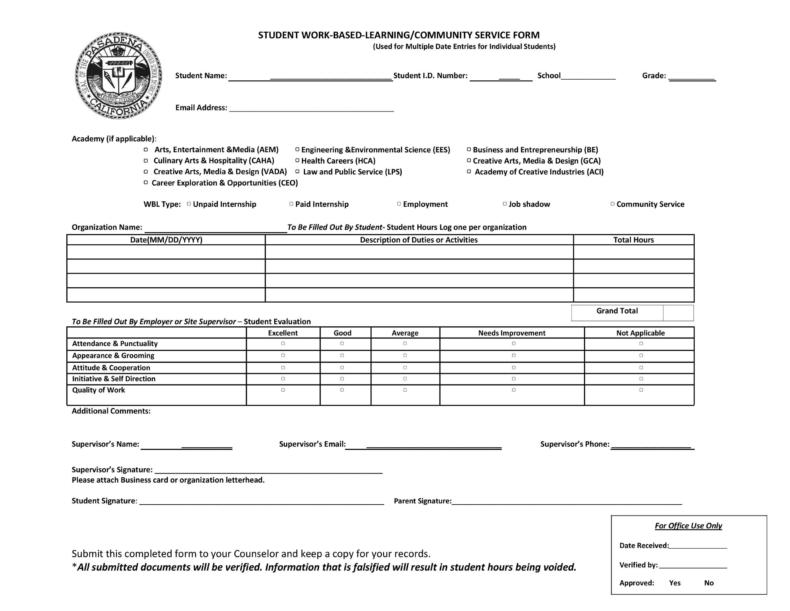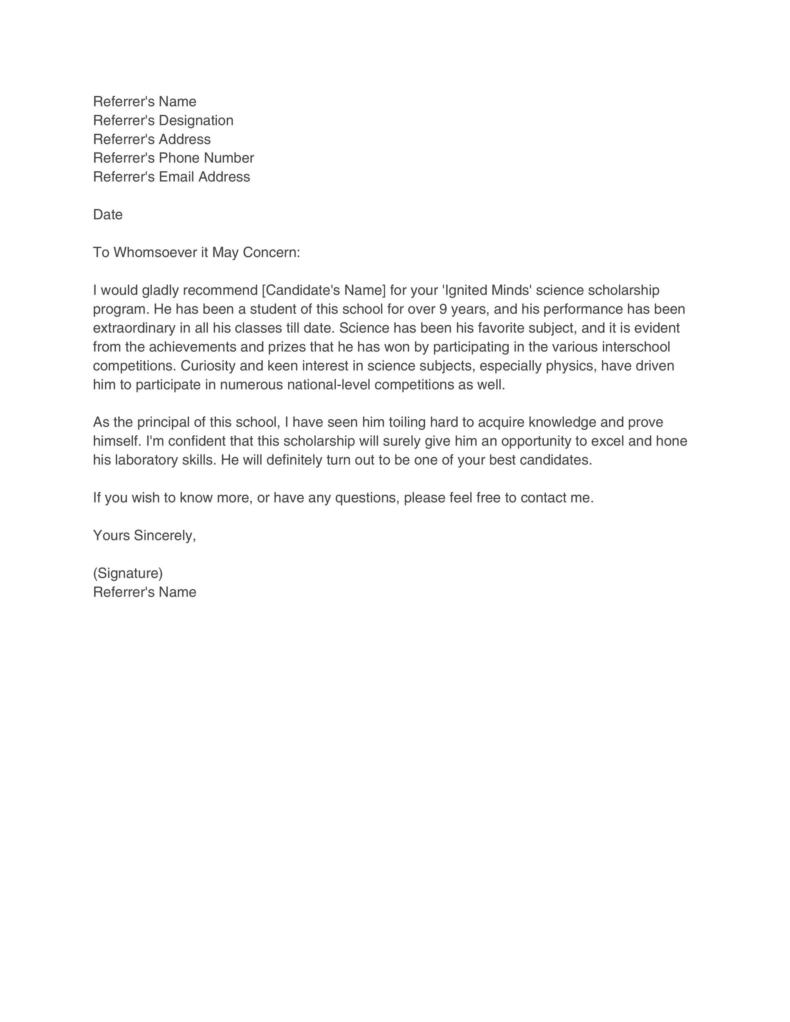Writing a great cover letter, or letter of introduction, doesn’t have to be difficult. With the proper letter of introduction template, and a couple of helpful tips and tricks, you can create a persuasive, professional business letter that helps you stand apart from the competition.
Some people find the idea of writing a letter of introduction a bit intimidating,; after all, you really only get once chance to make a great impression. When you’re seeking out a new job or new business opportunities, you want to make sure that your communications are clear, well-written, and persuade your reader to get in touch with you to learn more about you can help them solve a problem or add other value to their company.
Table of Contents
- 1 Letter of Introduction Sample
- 2 How is a letter of introduction typically used?
- 3 Business Introduction Letter
- 4 5 Tips for Making Your Business Introduction Letters Stand Out
- 5 Letter of Introduction Templates
- 6 Best Practices for Writing an Introduction Letter for a Job
- 7 Is Your Letter of Introduction Ready to Send? Use this Checklist
- 8 Closing Your Letter of Introduction
The first paragraph of your introduction letter is the most important. It should, in essence, be your “elevator pitch” to the letter recipient. In just a few sentences, you should be able to sun up who you are, what you are writing about, and why your reader should continue reading the letter.
Letter of Introduction Sample
Here’s a sample letter of introduction to help you brainstorm your own. Judy is looking to expand her catering business and partner with other people who work specifically in the wedding industry. She decides the best way to get new business is to network with other companies in her city that provide wedding services. Her first letter is to a florist, Mrs. Peterson, who specializes in luxury weddings.
Judy’s business letter introduction letter will read something like this:
Dear Ms. Peterson,
My name is Judy Harwick and I’m the President of Just Wedding Treats, an upscale catering business that specializes in exotic wedding fare. I’m excited to get in touch with you and let you know about our new, Caribbean-inspired gourmet offerings.
Our gourmet line of catering would be an excellent fit for your tropical-themed flower wedding arrangements, and we’d like to explore the idea of bundling our products together to help simplify the way weddings get planned.
I’d be happy to invite you to tour our kitchens, sample our unique wedding menus, and learn about how our authentic, gourmet line of food helps create memorable, exciting wedding events that people talk about for years to come.
Please contact me at 555-555-5555 at your earliest convenience to schedule your tour. You can also reach me via email at [email protected]
Sincerely,
Judy Harwick, President
Just Wedding Treats
How is a letter of introduction typically used?
Letters of introduction are used regularly in the business world across industries. Not only used by job applicants, business owners frequently use these types of letters to forge new partnerships, generate sales, or make a recommendation for a colleague or friend. The content of the letter depends on your purpose or end goal. A letter of introduction is a formal way for you, or your business/organization to introduce yourselves directly.
Here are 7 ways a business introduction letter can be used. There are also plenty of other ways different industries can use a letter of introduction to seek out new opportunities, projects, and even new partnerships. On this page, we’ve provided you with a fantastic letter of introduction template to use. Depending on your goals, this template can be very versatile and help you reach them.
- Job seekers can use a letter of introduction to seek out new opportunities at a company they’re interested in working for. By introducing yourself and talking about your ambitions and skills, you can be the person who comes to mind when a new job opening is available.
- Real Estate businesses and investors often use the letter of introduction to approach potential clients, introduce their company, and show off a level of professionalism that helps them stand apart from the competition.
- Freelancers, such as freelance writers, graphic designers, virtual assistants and other business professionals, often send a letter of introduction as a way to build their business.
- Business to business sales. Companies that sell services of products to other companies generally use letters of introduction as a starting point in building new relationships.
- Educational opportunities. Often, academics will use a letter of introduction to sniff out new opportunities in their field, or recommend a friend or colleague to contribute to a new research project.
- Approaching opportunities overseas. If you do business on an international level, you know that professionalism and politeness is an important part of building goodwill with your business partners and potential customers. Make sure you do your research to learn about the culture of businesses overseas.
- Seeking new distributors. Many manufacturers will seek out new distributors for their products, and a letter of introduction is an excellent way to seek out new partners to help with your sales.
Business Introduction Letter
5 Tips for Making Your Business Introduction Letters Stand Out
Whether you’re drumming up new business or plan on using a letter of introduction for job searches, there are some basic best practices that can help your letter truly shine. Make sure your letter is formatted correctly; we’ve included a letter of introduction template on this page to help you with your letter writing. Here are 5 more tips to make your introduction letter stand apart from the crowd:
- Do your research. Research is absolutely essential to your letter, and tells your prospective employer, customer, or partners that you know what you’re talking about. Explain what special skills or unique selling proposition you can offer your recipients. Explain how your services or skills will enhance the incredible job they’re doing and blow their competition out of the water.
- Understand their company culture and brand. If the business you are approaching doesn’t use formal language, then you’ll want to write the letter using terms and words that they associate with their company. You can get a feel for how a business views itself from the carefully chosen language they use on their website, in advertisements, and even press releases.
- Keep it short and sweet. You want the business to contact you for more information on how you can enhance what they do. Aim for powerful, impactful language, but keep a business introduction letter under 400 words.
- State your purpose before anything else. Let the reader know you are writing to introduce yourself and your skills/talent/product to their company, and why your skills/talent/products are a natural fit.
- Always close with a call to action. Let your readers know exactly what you’re hoping they’ll do, such as give you a phone call, schedule an appointment, or join your mailing list. Let them know you’ll also be following up on a specific date. When waiting for a follow up call or email, be patient – give them at least three business days, preferably at least five, to get back to you. You don’t want to appear impatient when you’re the one who will benefit most when they choose to get in touch with you.
Letter of Introduction Templates
Best Practices for Writing an Introduction Letter for a Job
When you’re writing a letter of introduction to a potential employer, it’s paramount that you write a letter that’s full of passion and enthusiasm. Your letter should show that you understand the company, and believe that you’re a great fit. Nowhere in the letter should you come across as desperate for the job. Instead, you should focus with laser-like precision on what makes you a great applicant. Do you have a sense of humor? Were you blessed with ability to solve difficult problems or handle conflicts in a way that works out for everyone? Your letter of introduction should reveal much more than the standard template.
Think about your “people skills” and other social skills that you use everyday. If you’re great with difficult people, or have a reputation for staying calm or collected under immense pressure, this is a great time to mention it.
Accomplishments and awards are also memorable items to include in your cover letter. Focus on your own unique talents, accomplishments, and passions. Make sure the reader knows what things you’re passionate about.
It’s also important to make sure your letter is formatted properly by using a proper letter of introduction template like the one on this page.
Is Your Letter of Introduction Ready to Send? Use this Checklist
Never sit down and write a single draft for your business introduction letters. You’ll soon regret it if that’s the way you approach letter writing. The first draft is simply never the best draft! Although the task may seem tedious, you’ll find your letters generate a lot more interest when you take the time to write them well. With this in mind, here’s a handy checklist full of guidelines and tips to help your final letter truly shine.
- Do you open strongly? Piquing your reader’s interest is essential. If the first line sounds “flat” and boring, there’s a good chance your reader won’t get past the first lines or paragraph. Applying for a coveted job opening? Start your letter with your job title, if it’s impressive and relevant, and the major skills you bring to the table. Looking to sell to a b2b customer? Start your letter with a question and tailor the letter to specify that you’re writing to help solve a problem. The point of your letter should be obvious within the first lines of the letter.
- Do you sound excited? Enthusiasm is infectious, and your enthusiasm should shine through. Try using an active, friendly voice in your writing. Active words are usually present tense and tend to make the reader feel more involved in what they’re reading.
- Does the language flow smoothly? Don’t use big words from the thesaurus to show off your intelligence. It generally annoys HR people when applicants do that. An introduction letter should be short, sweet, and to the point. Now is not the time to use buzzwords or language that makes your letter difficult to read. Read your letter out loud. Or, better yet, have a friend or family member read it and give you their feedback.
- Check your grammar and spelling. This is another important reason to read your letter out loud. We all know how unreliable selling and grammar check programs can be. They often miss small, but obvious, mistakes. You don’t want to send a mistake-filled letter to a potential client or employer.
- Pay attention to the keywords you’re using. This is especially true if you’re enclosing a resume or statement of services. Many companies use software that scans for specific keywords and automates many resumes out of the running for a job. If you’re replying to a specific job ad, you’ll find that your letter will benefit from using the same language that he ad uses to describe your skills. If an ad says they need somebody “tech savvy”, you’ll want to find a way to fit that description into your letter, and let them know the specifics are included in your attached resume.
- Follow up with a thank you if the recipient responds. Regardless of the outcome of your letter, you’ll find a little politeness goes a long way. Send a formal thank you note in the mail (not email!) if you score a phone call or an interview.
Closing Your Letter of Introduction
When you finish up your letter of introduction, you’ll want to re-emphasize your key points and include a call-to-action for your reader. What do you hope is the outcome of this letter? Do you want to schedule an appointment, interview, or conference call?
Remind your reader of the main points of your letter, and give them specific ideas on how to follow up. If you plan to contact them to follow up yourself, give them a bit of warning and several business days in between the letter and your next point of contact. Let them know if you plan on being persistent – but don’t be aggressive with any phone calls or follow up. Give your prospect plenty of time to get back to you. After all, we all lead busy lives.

